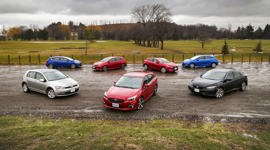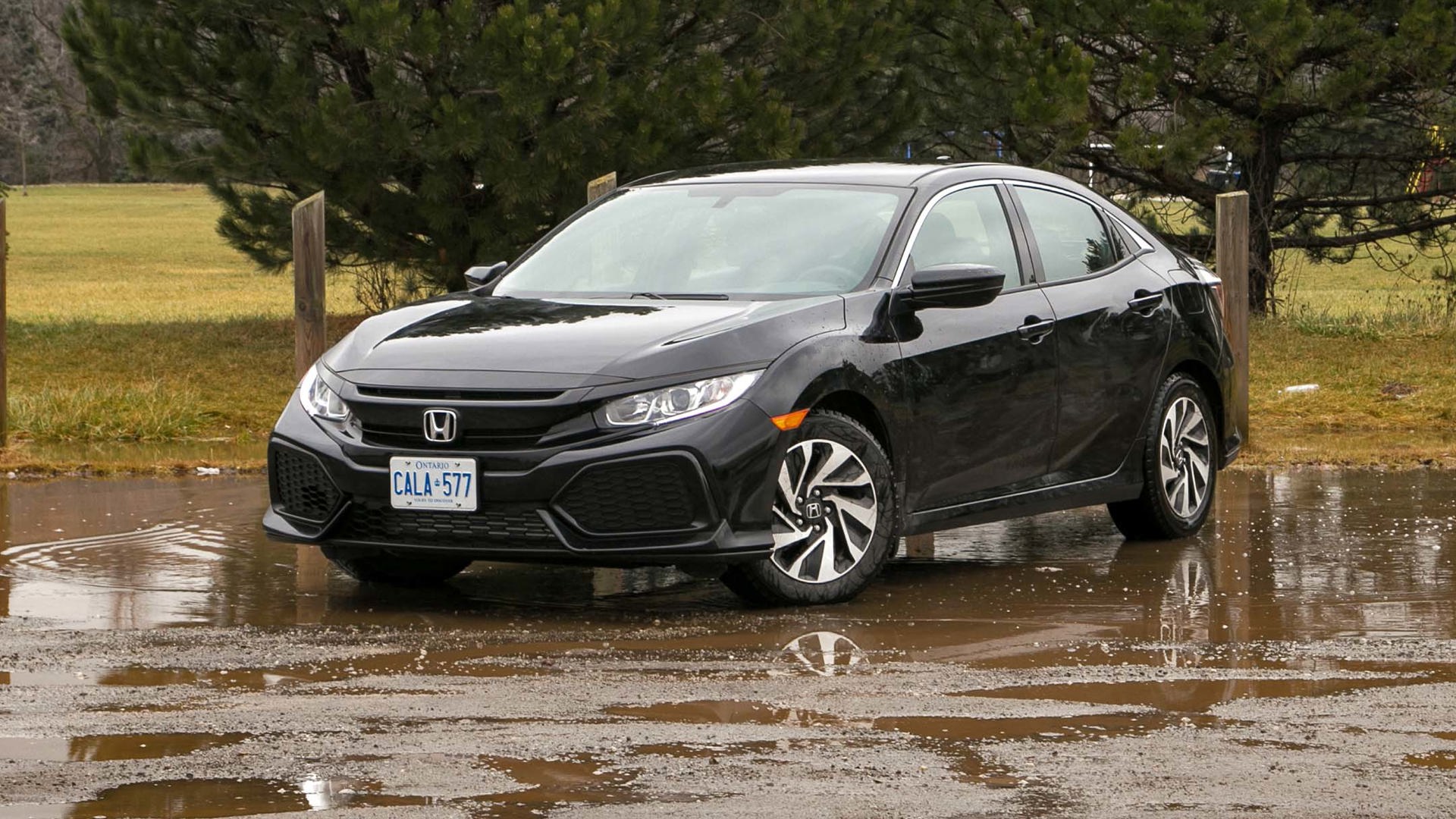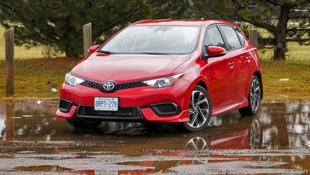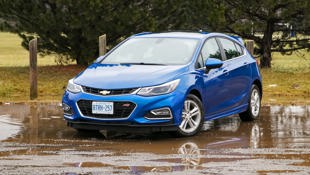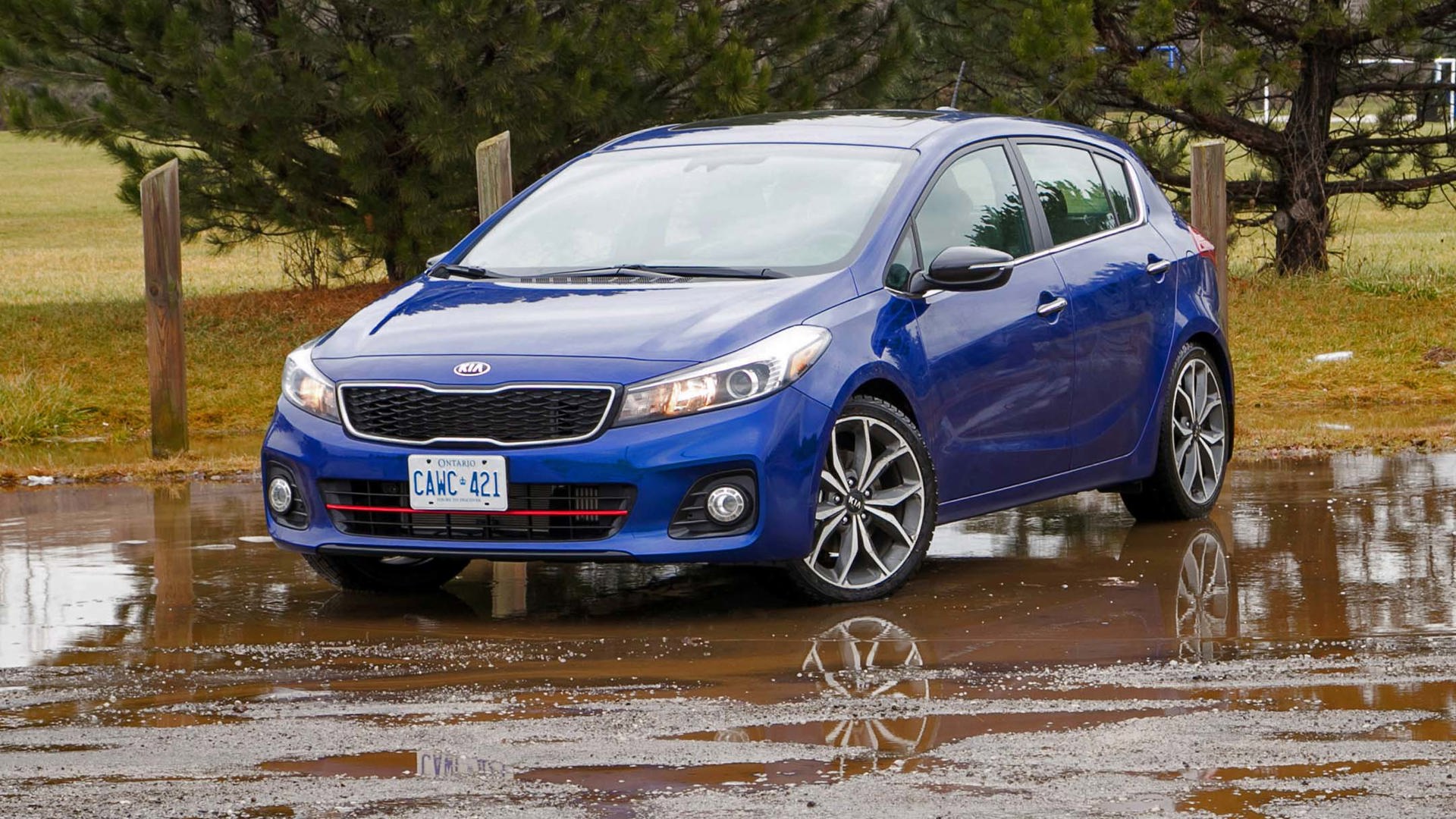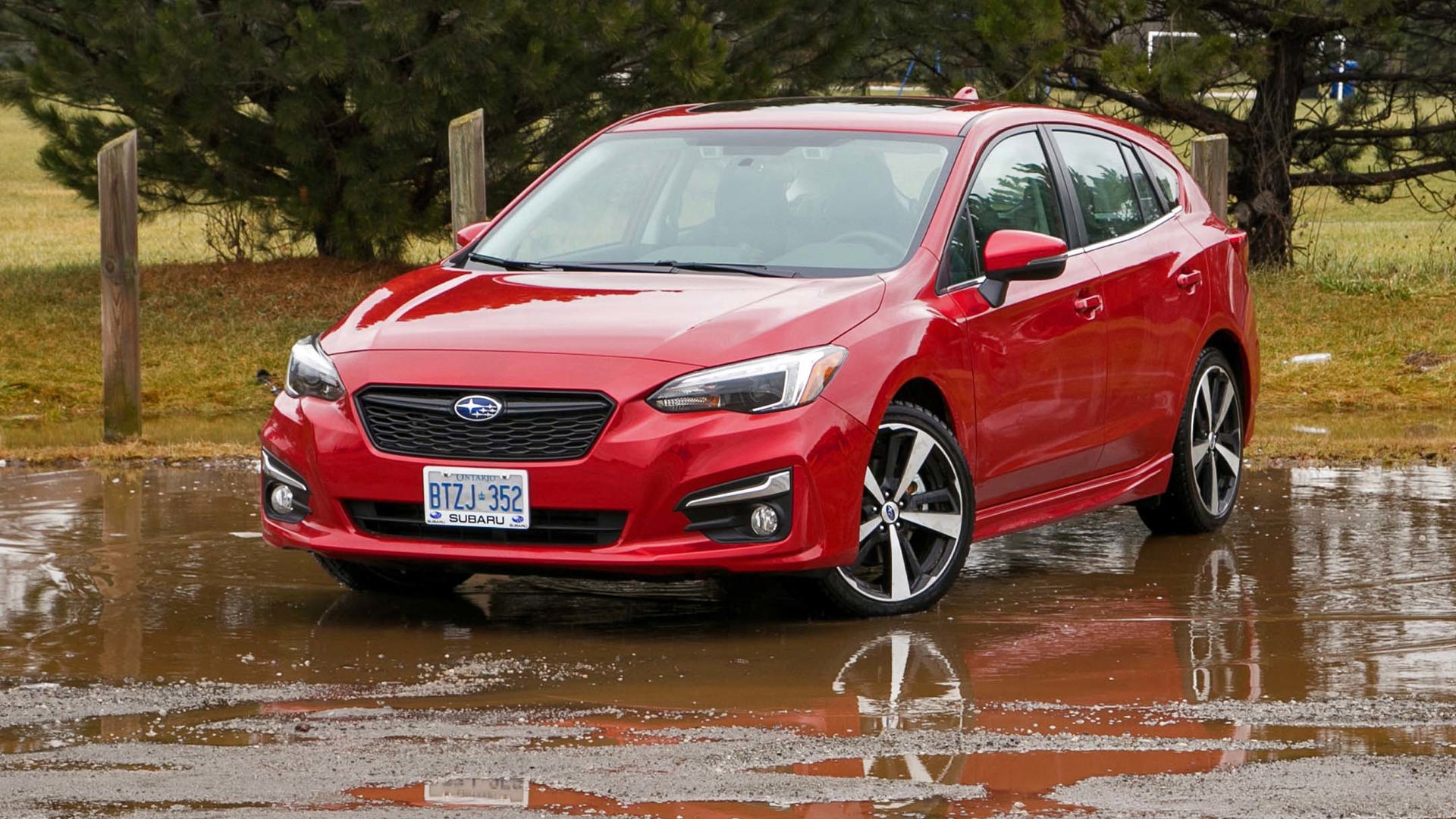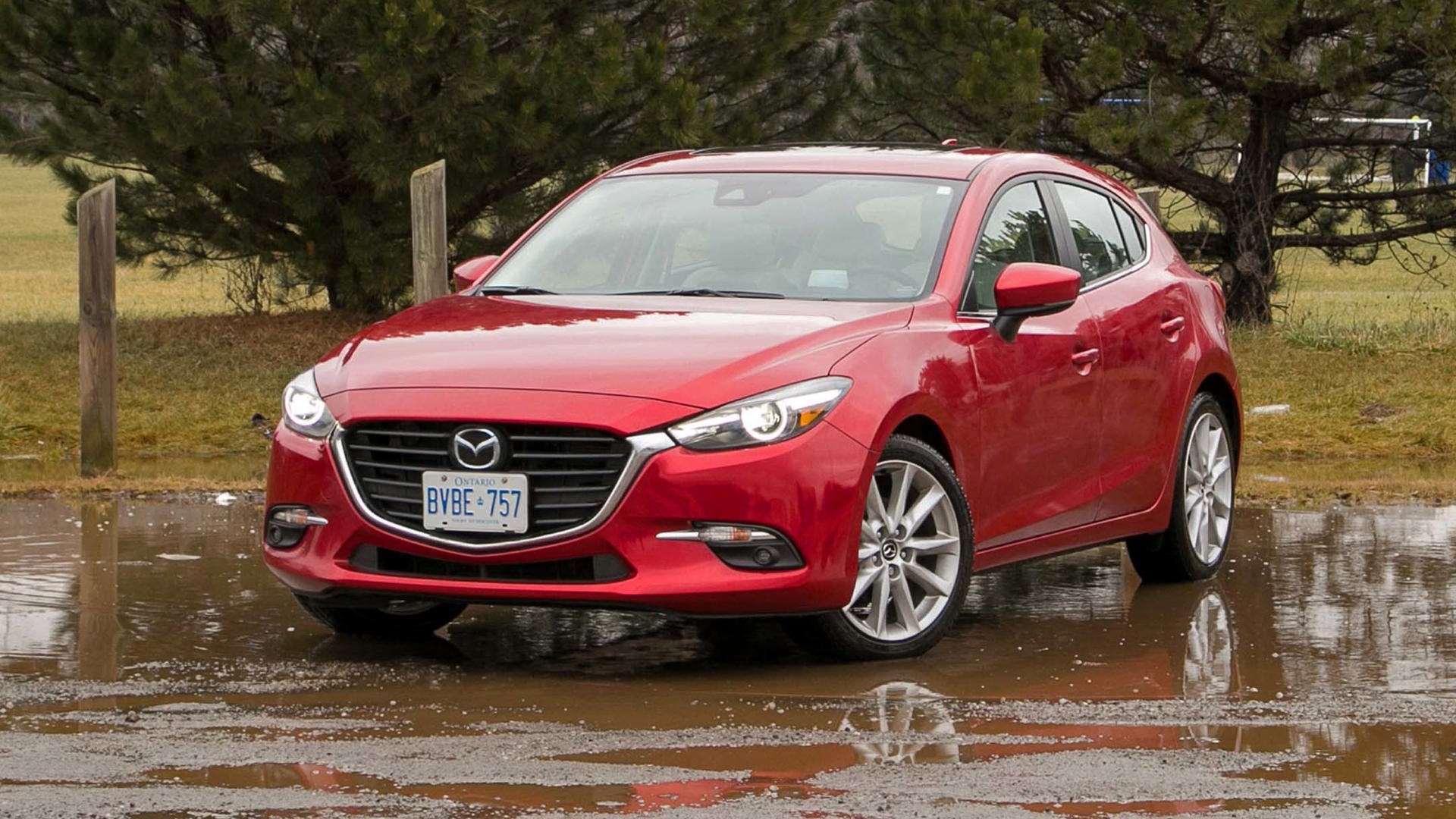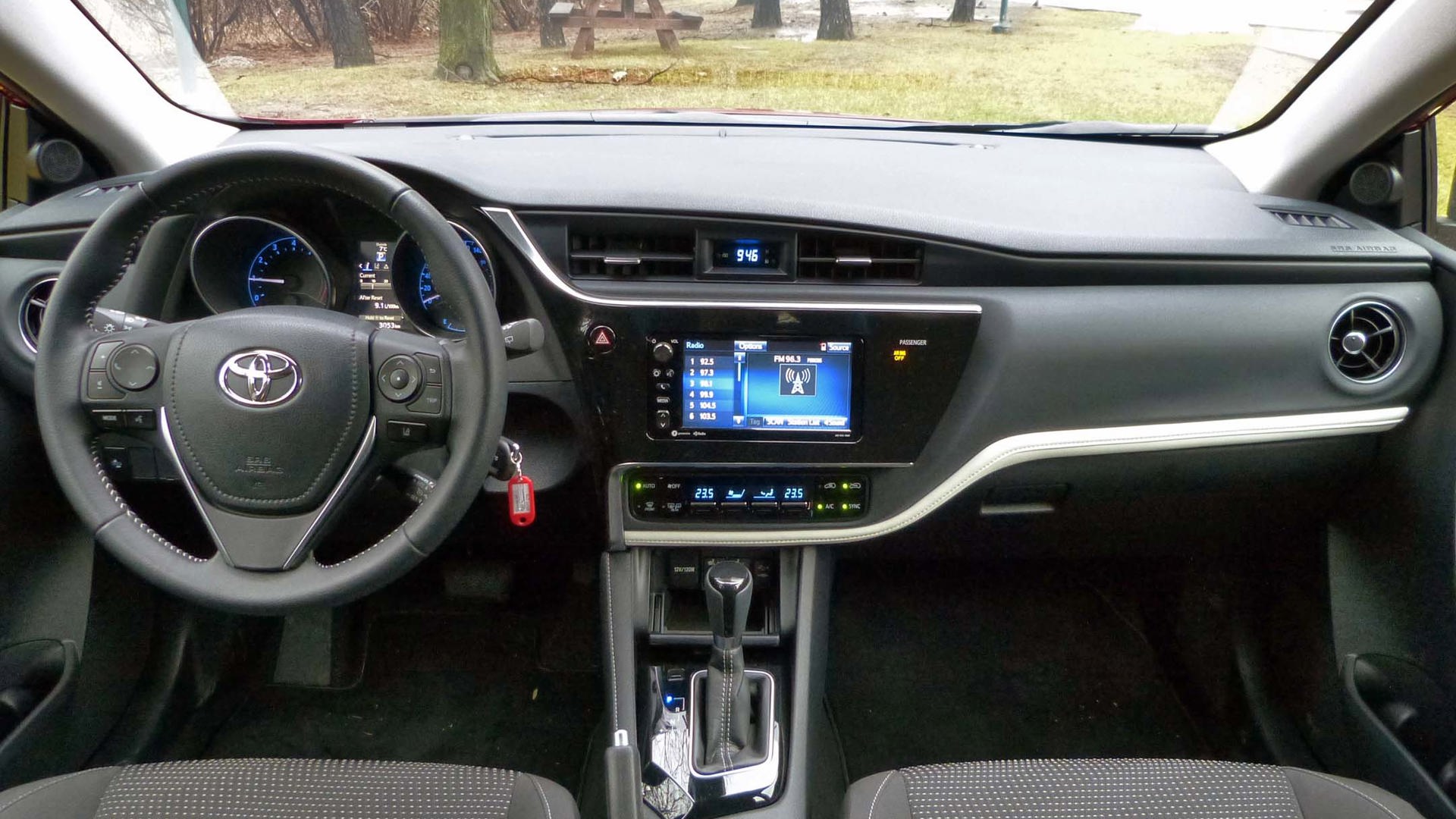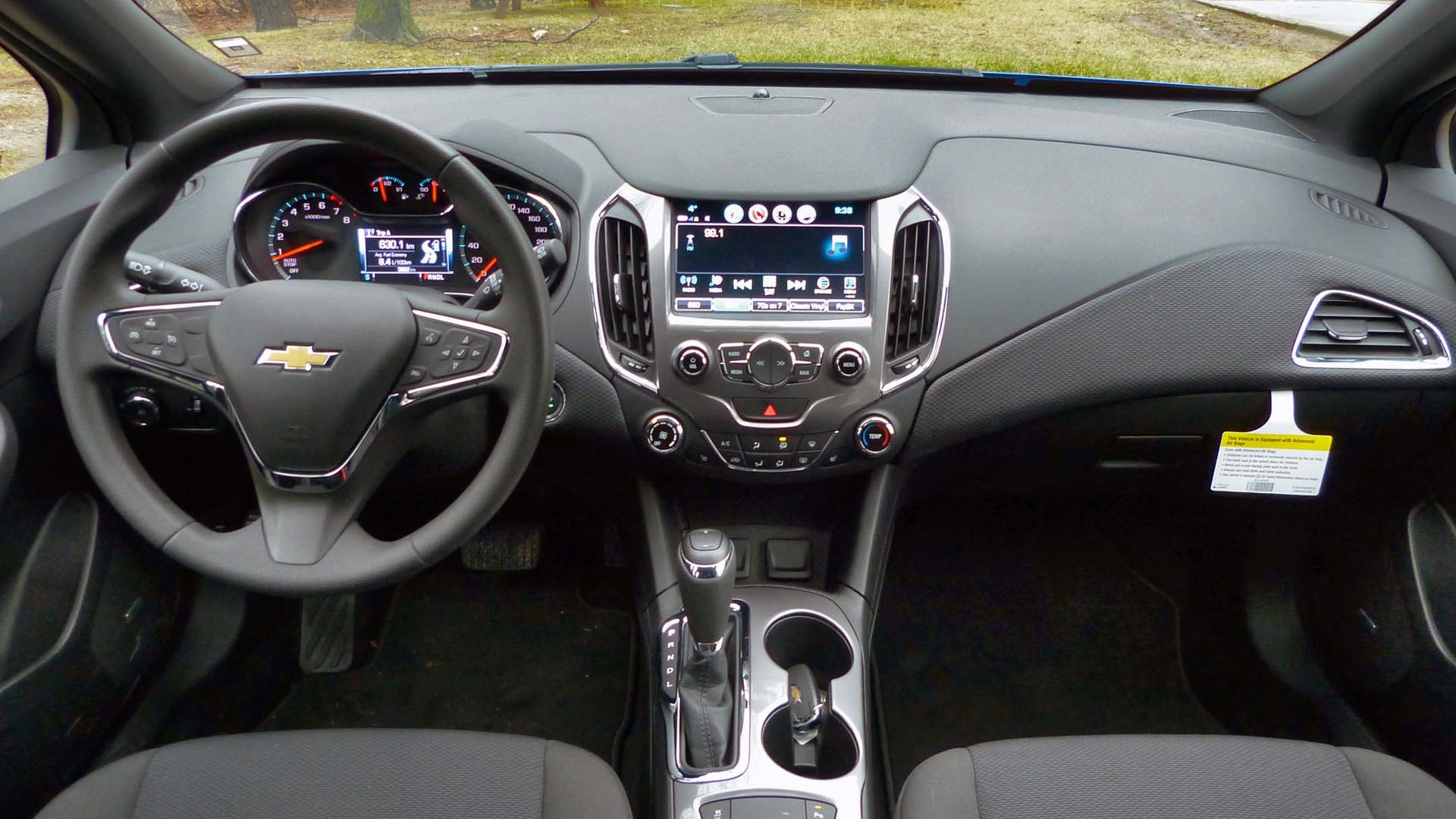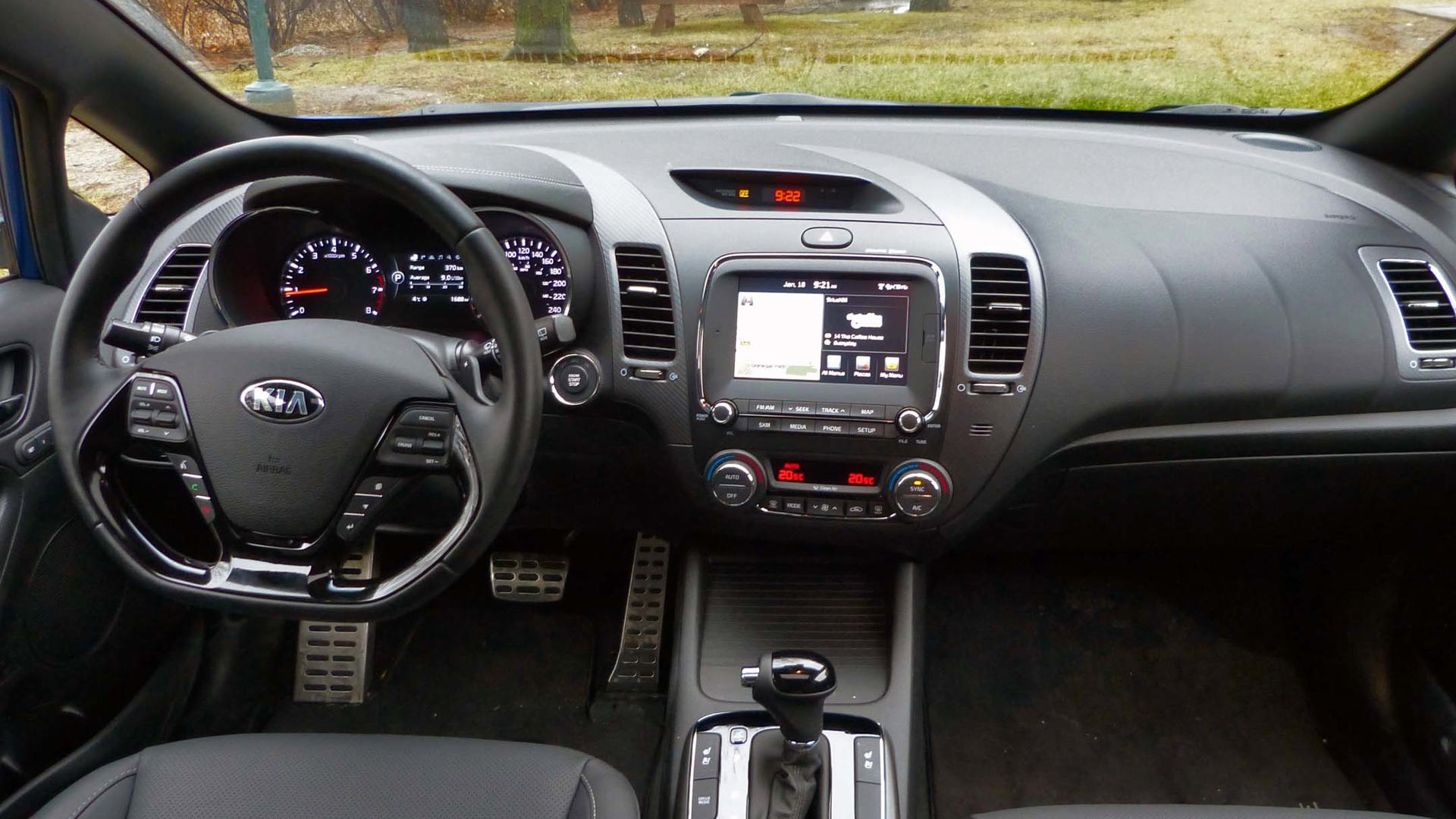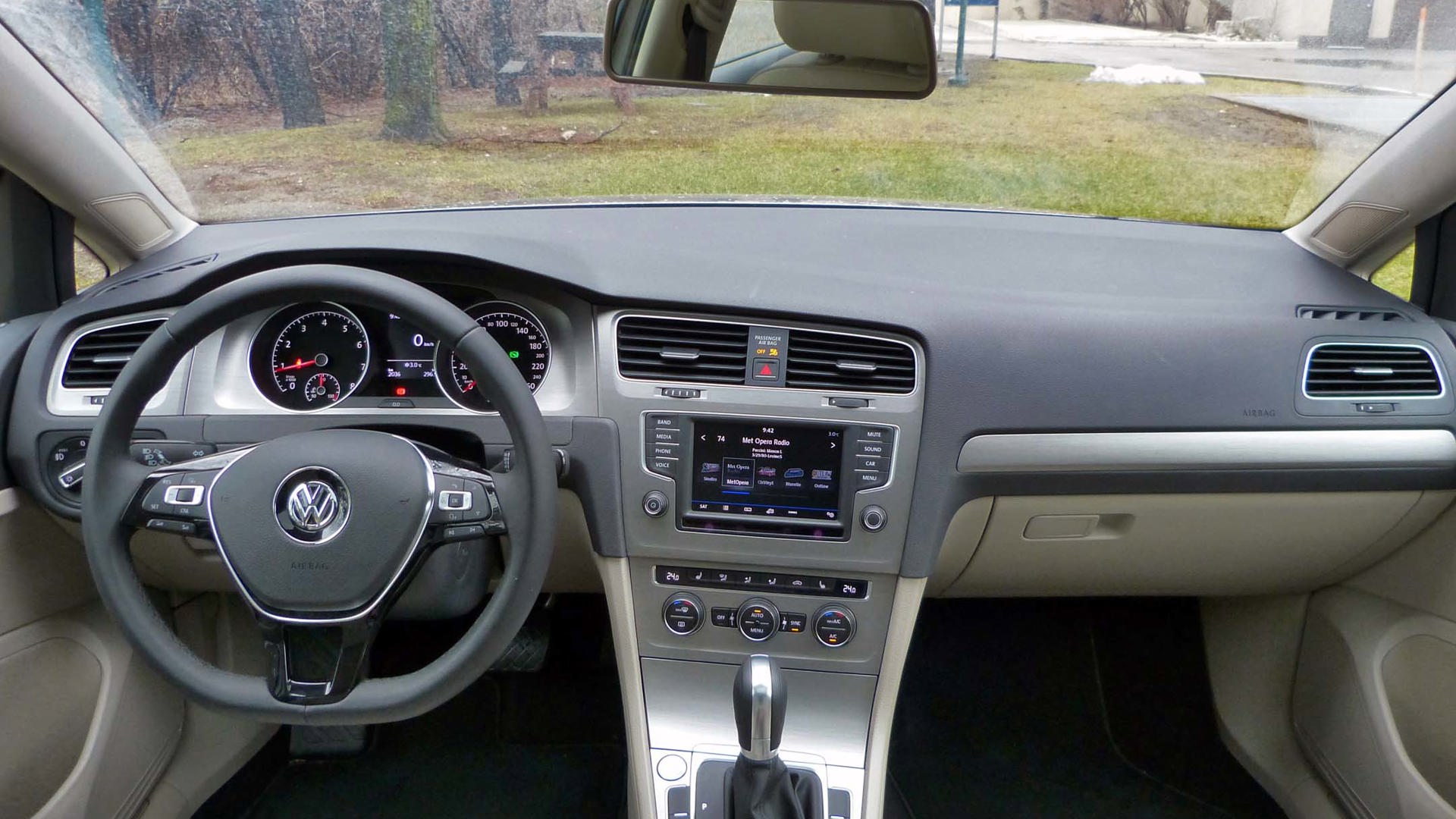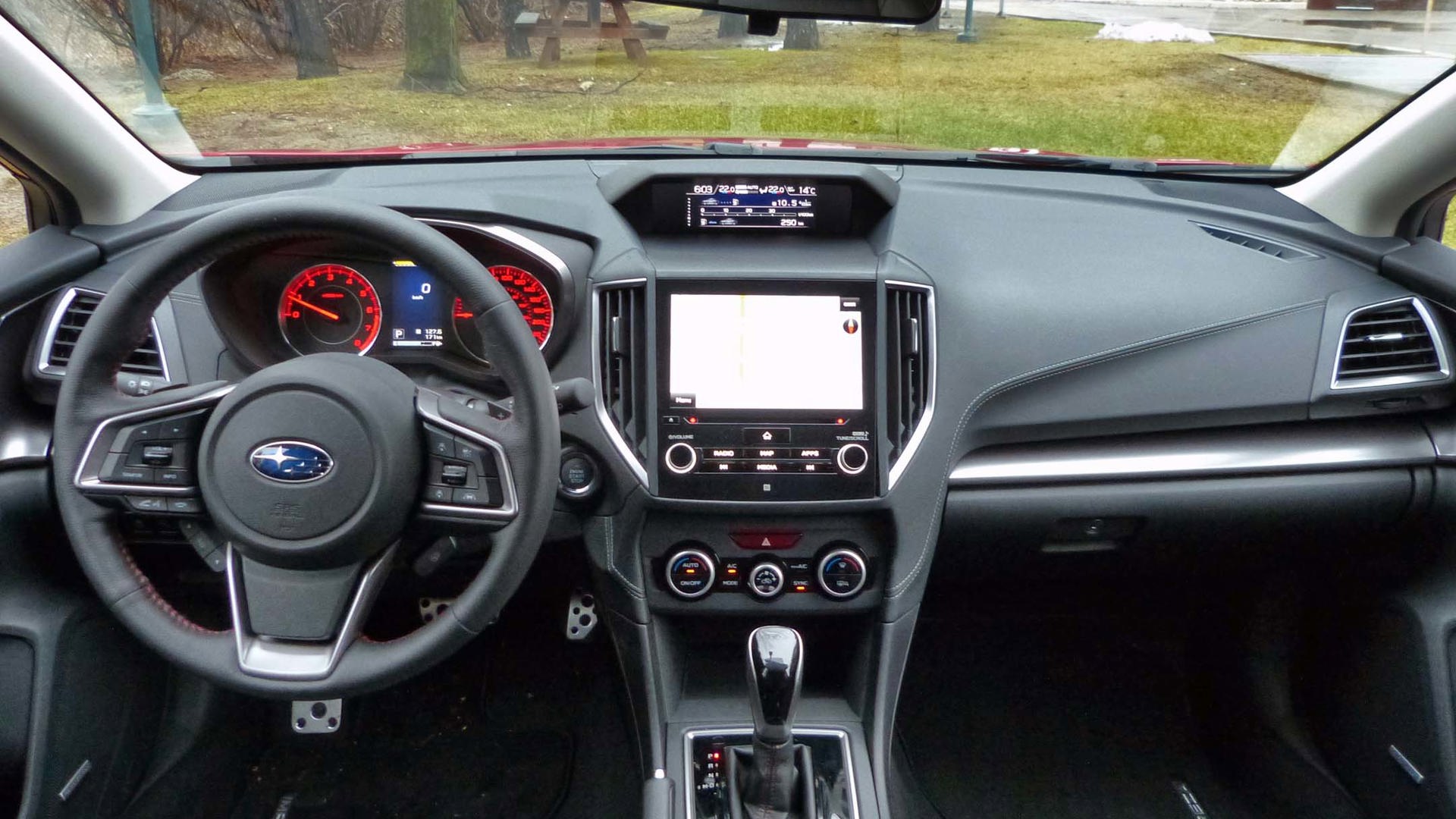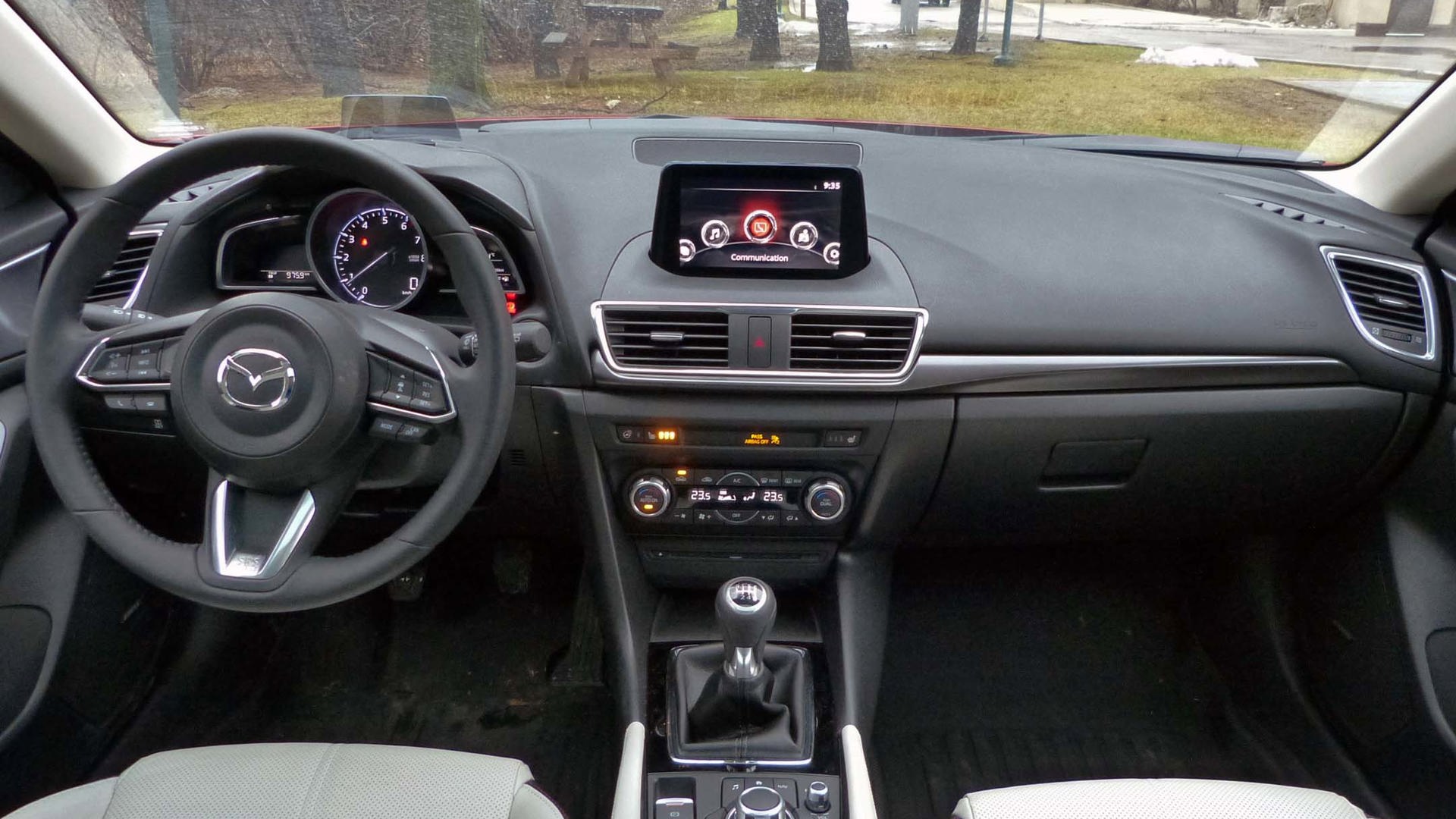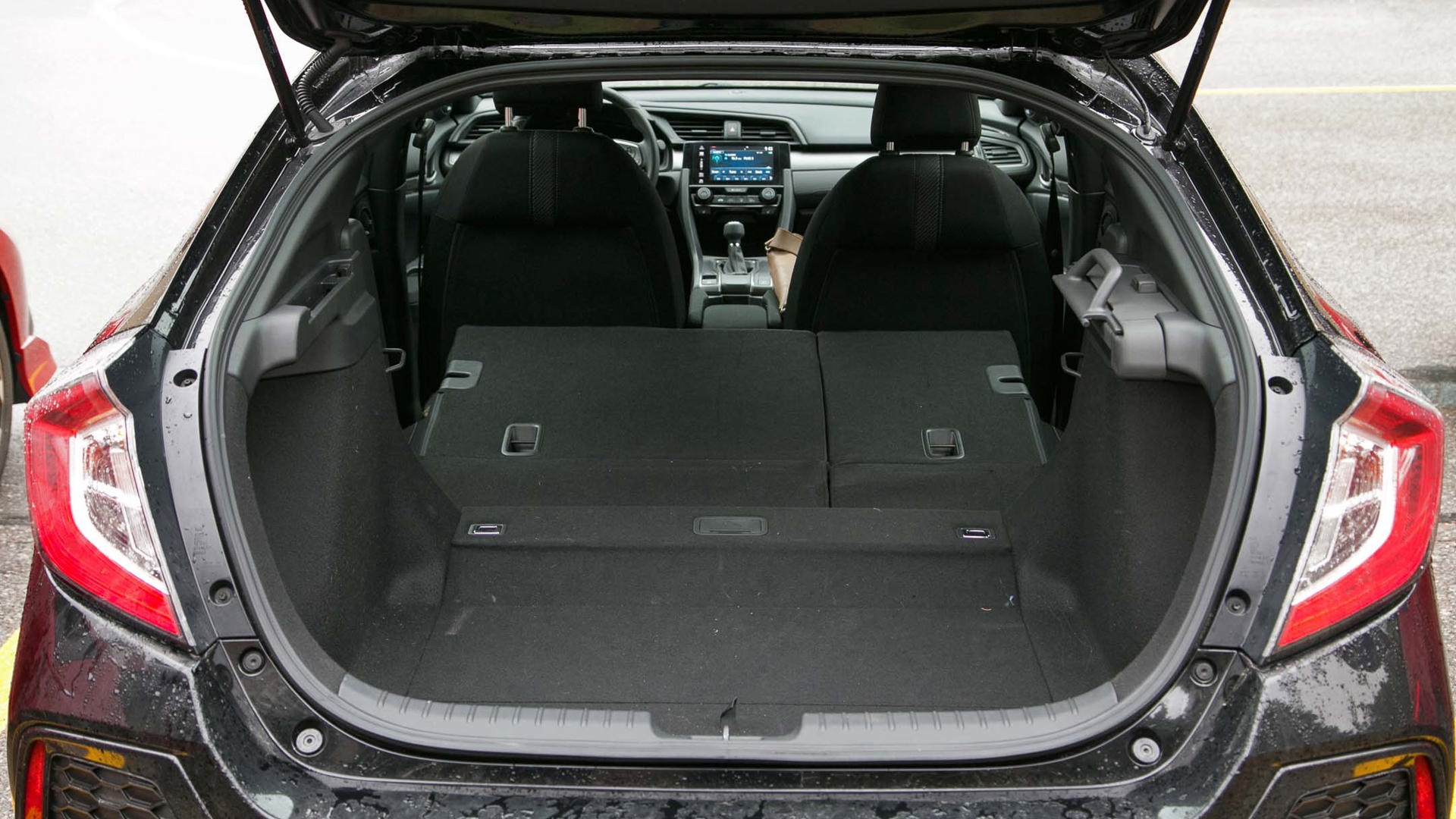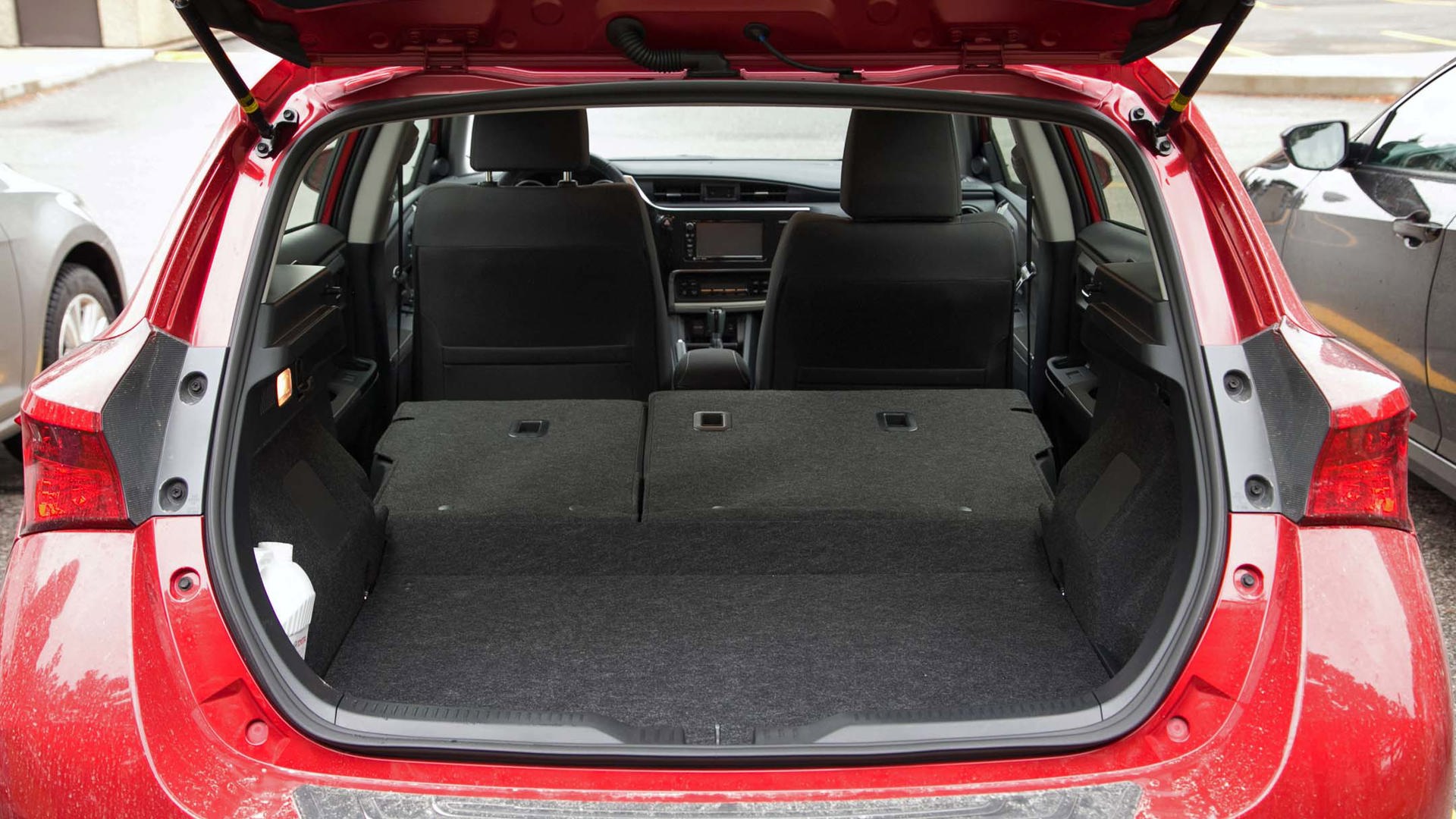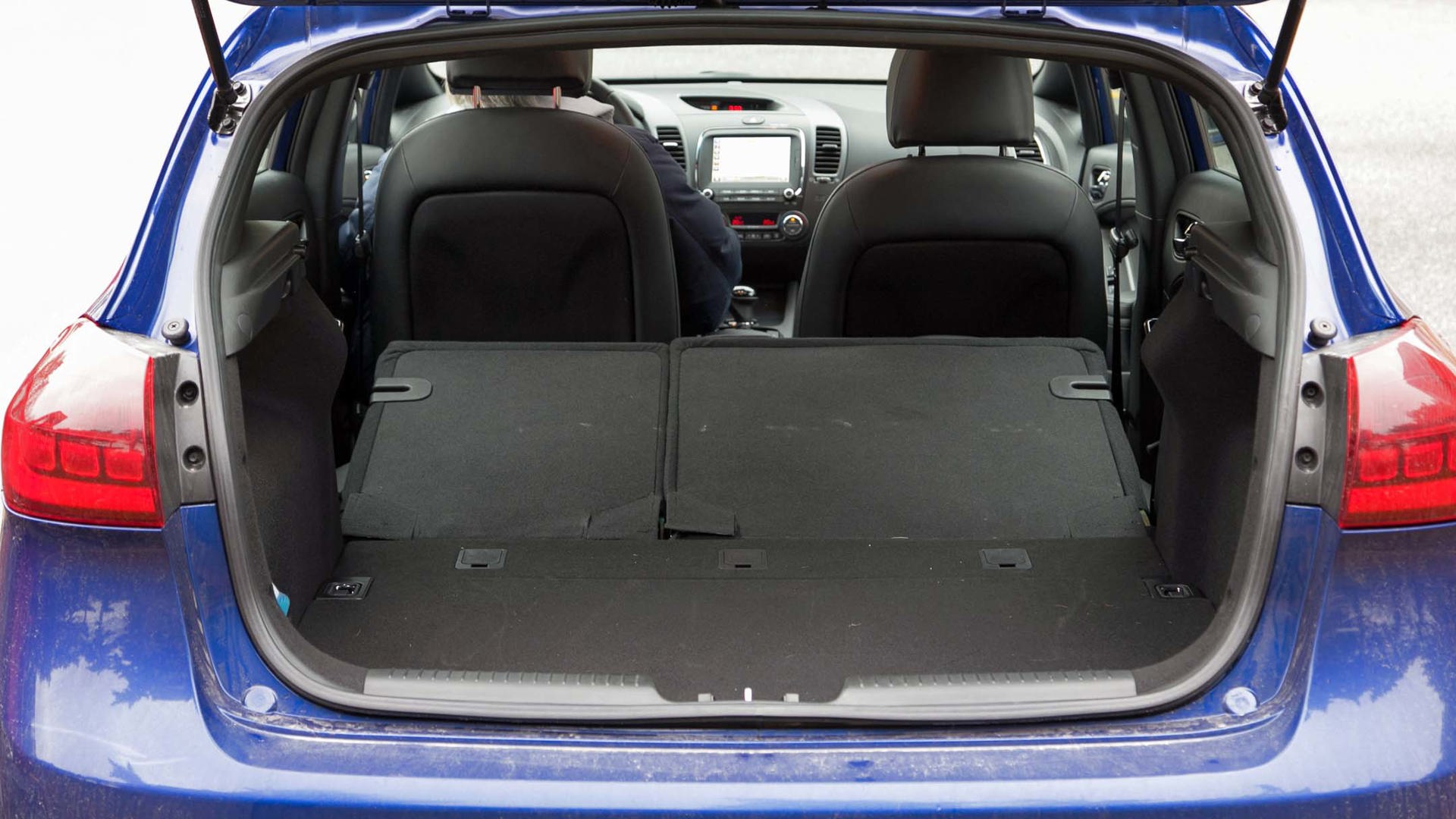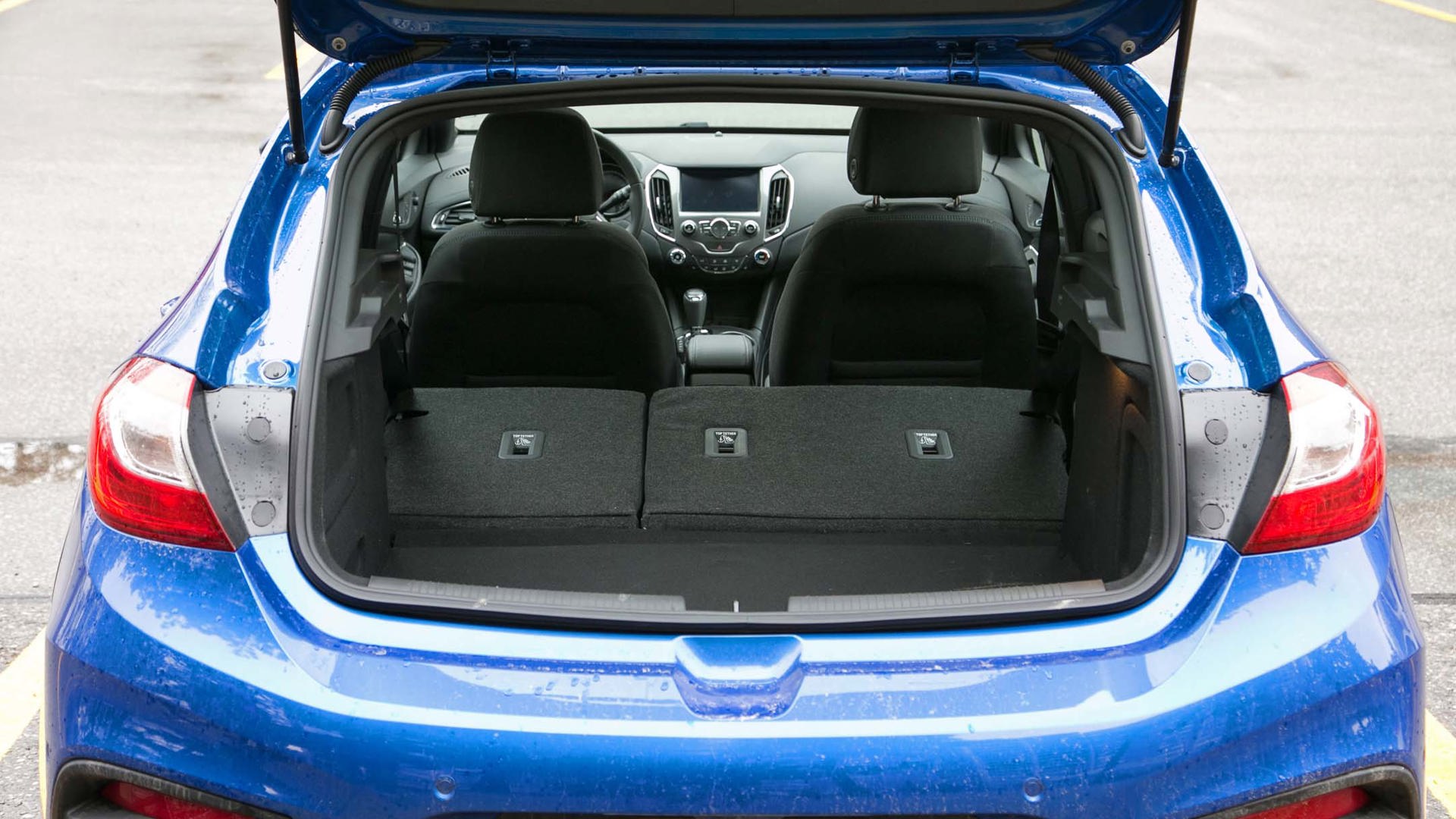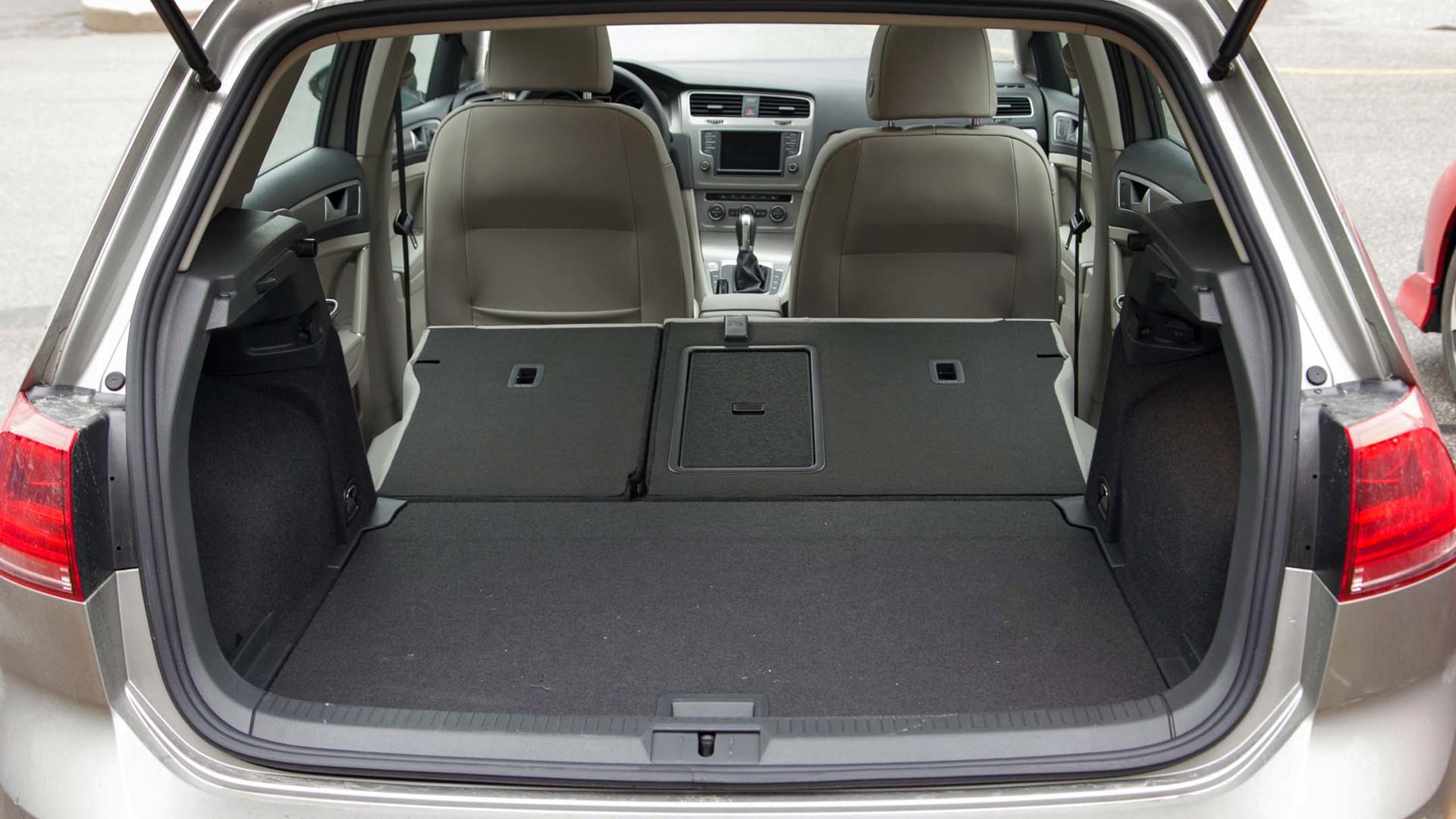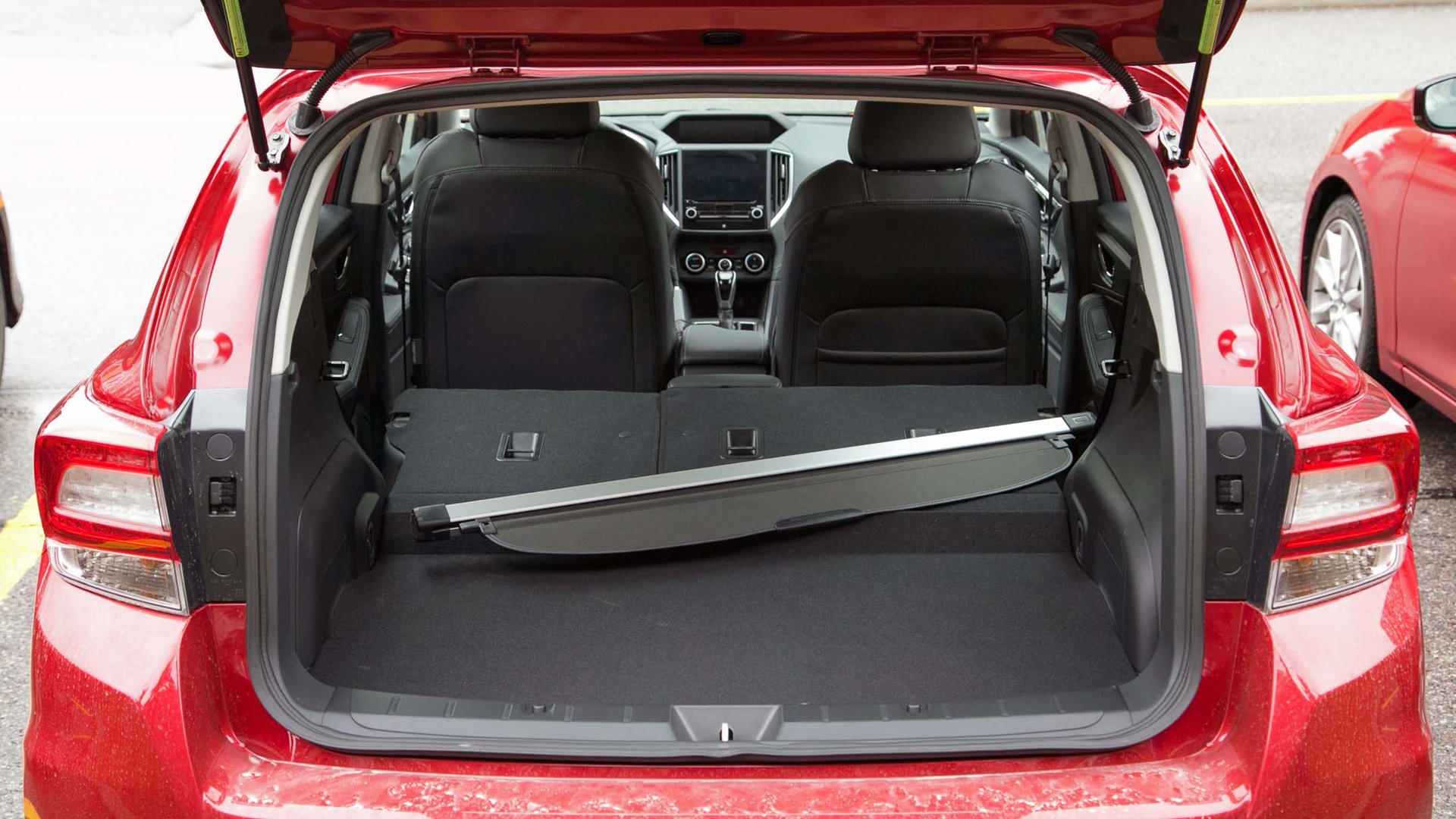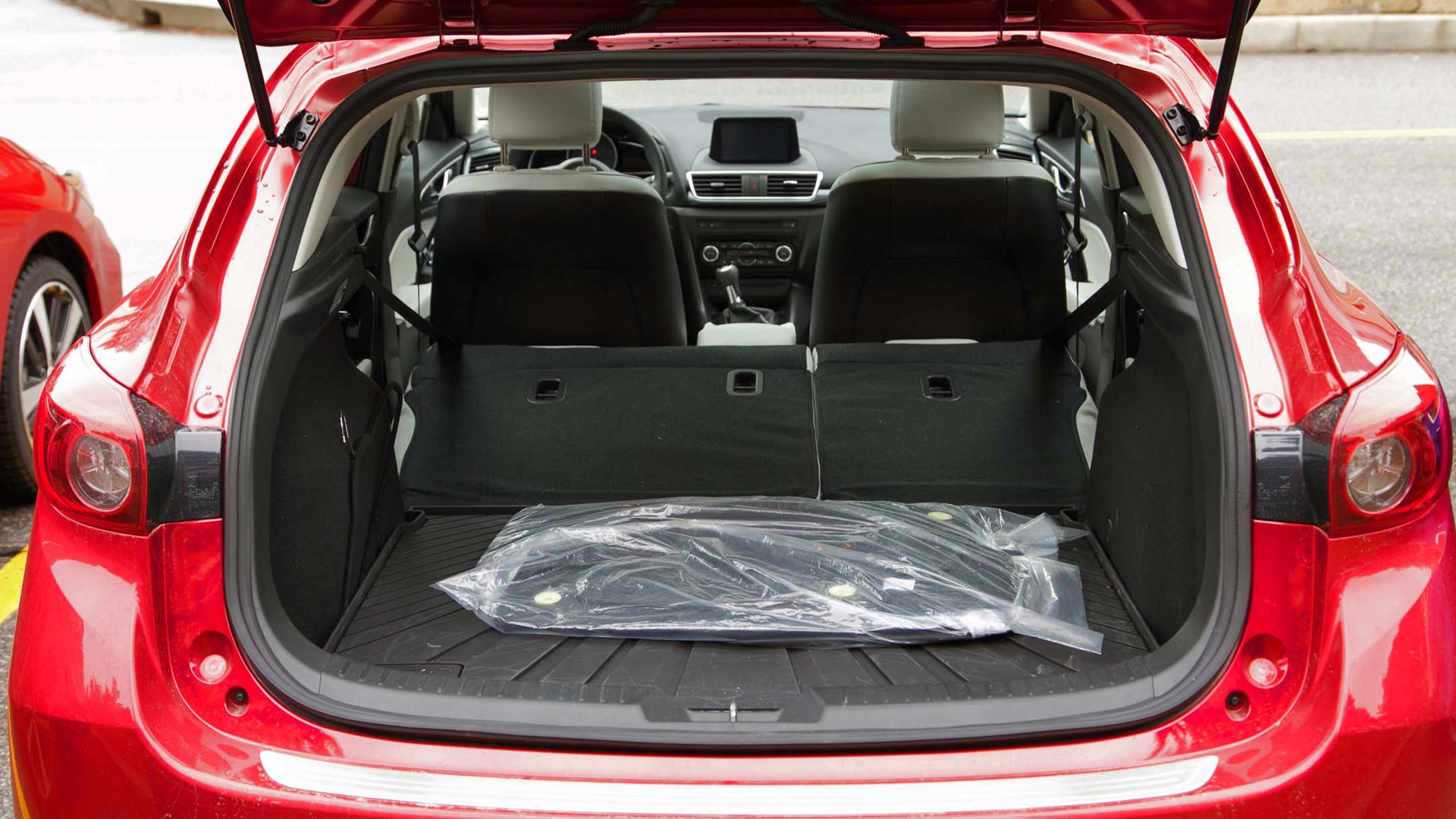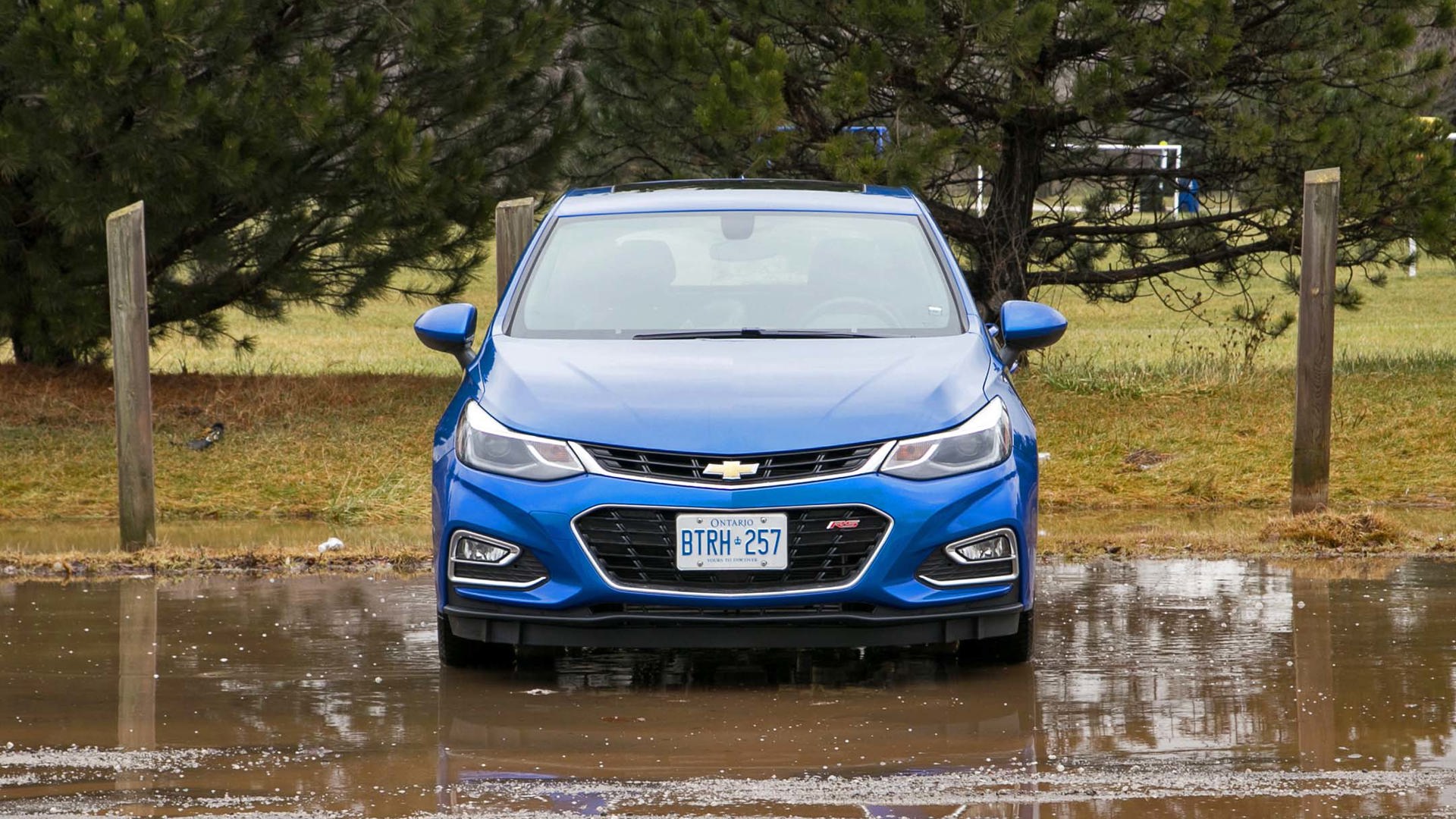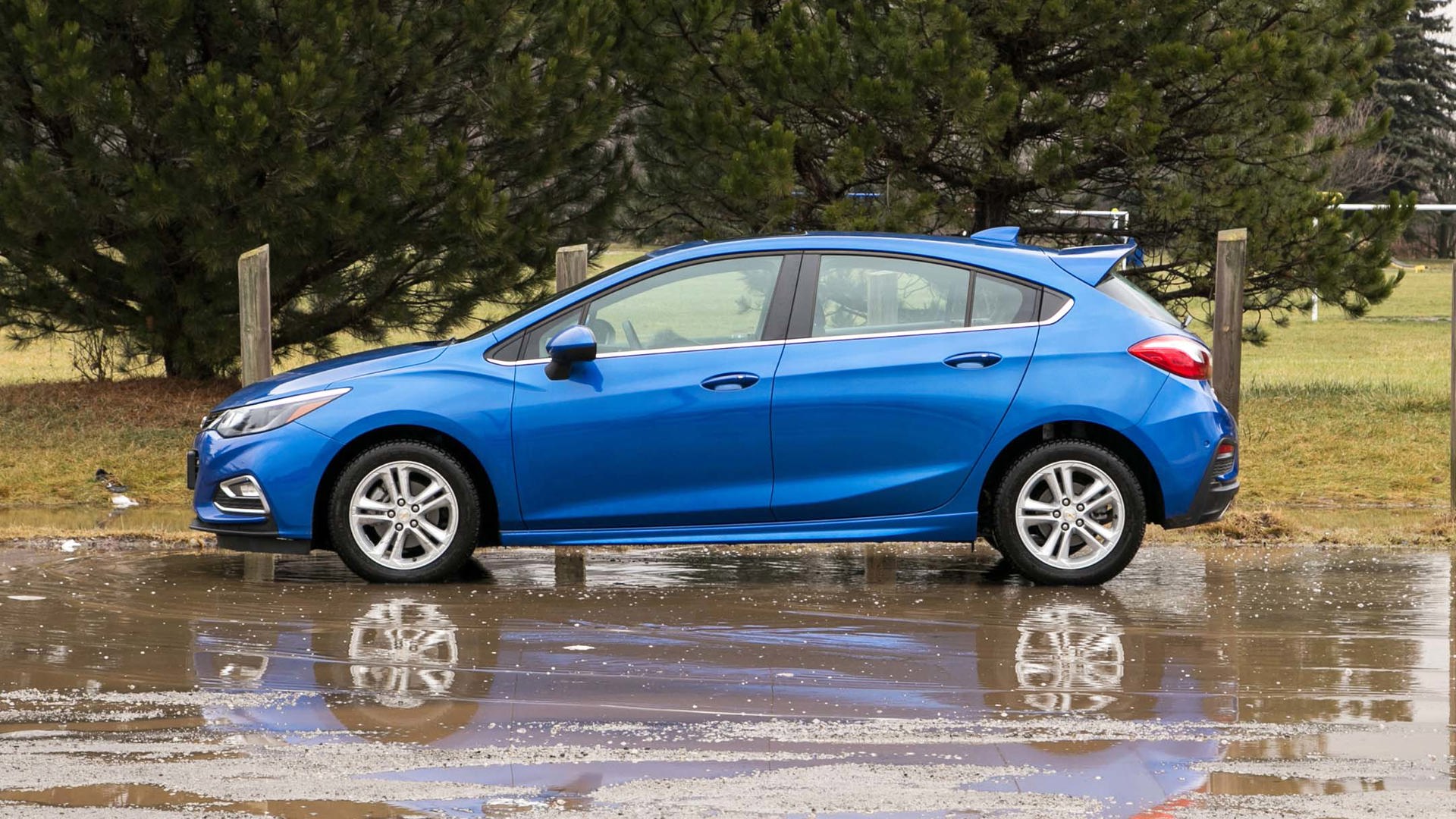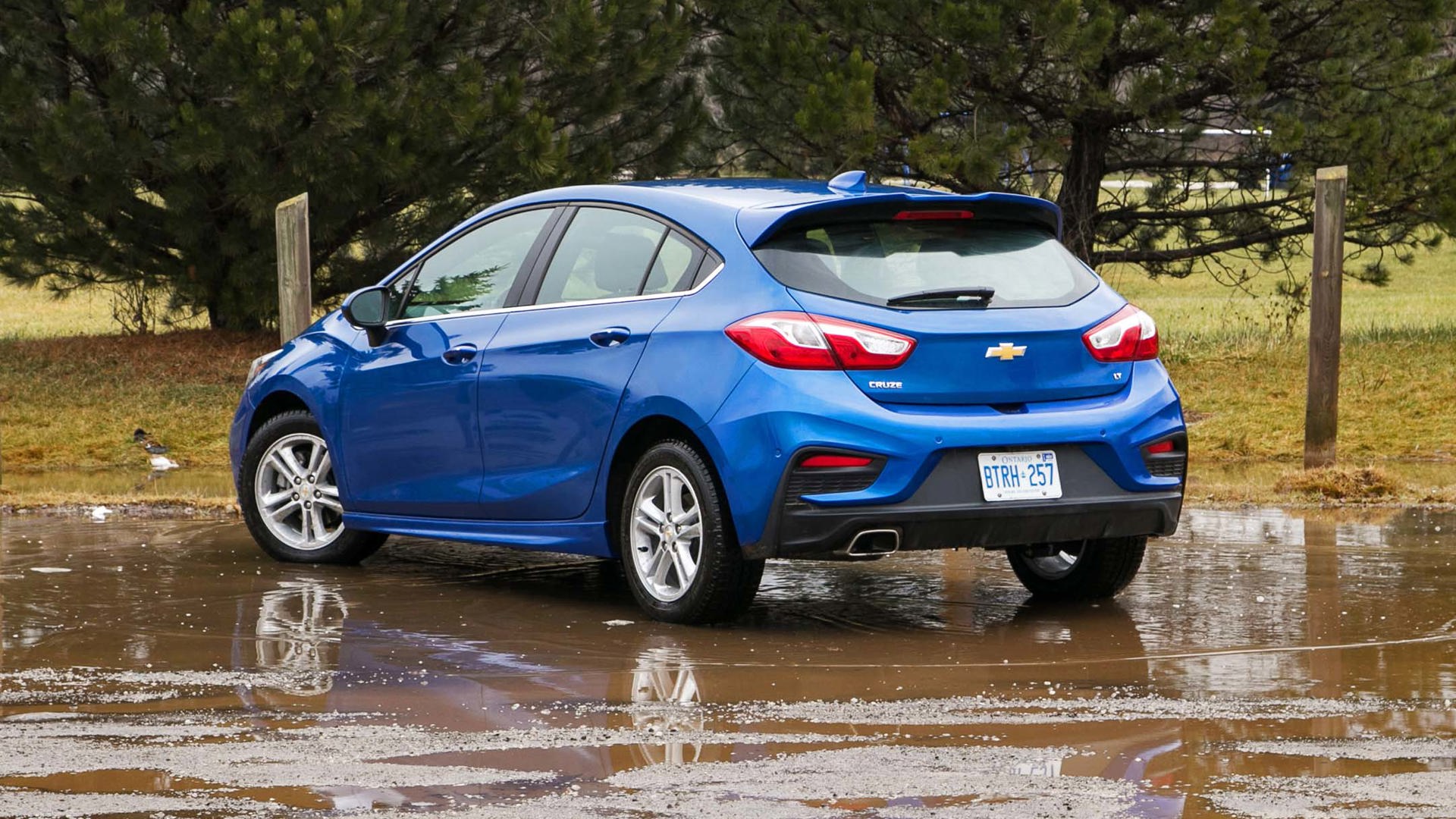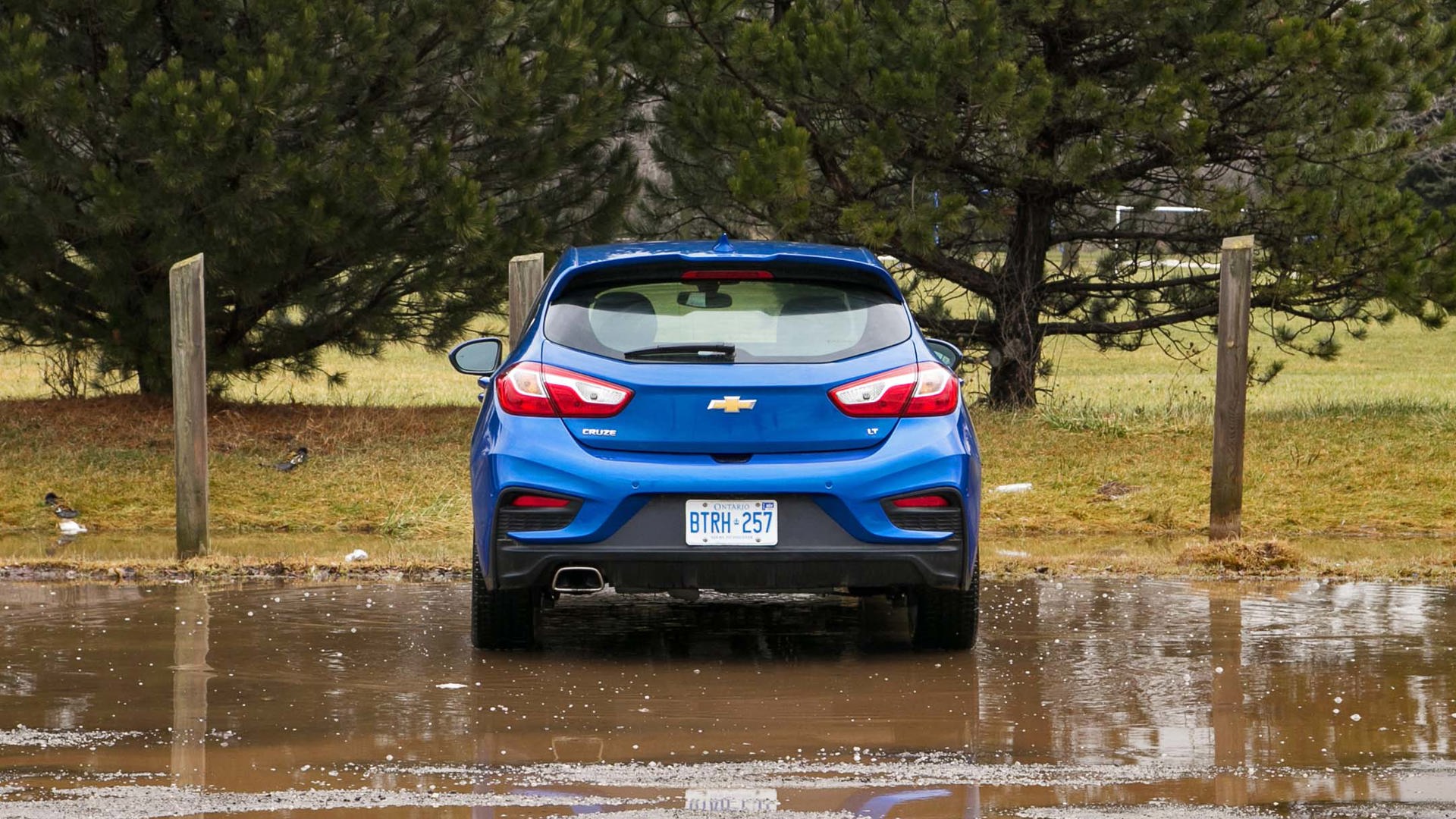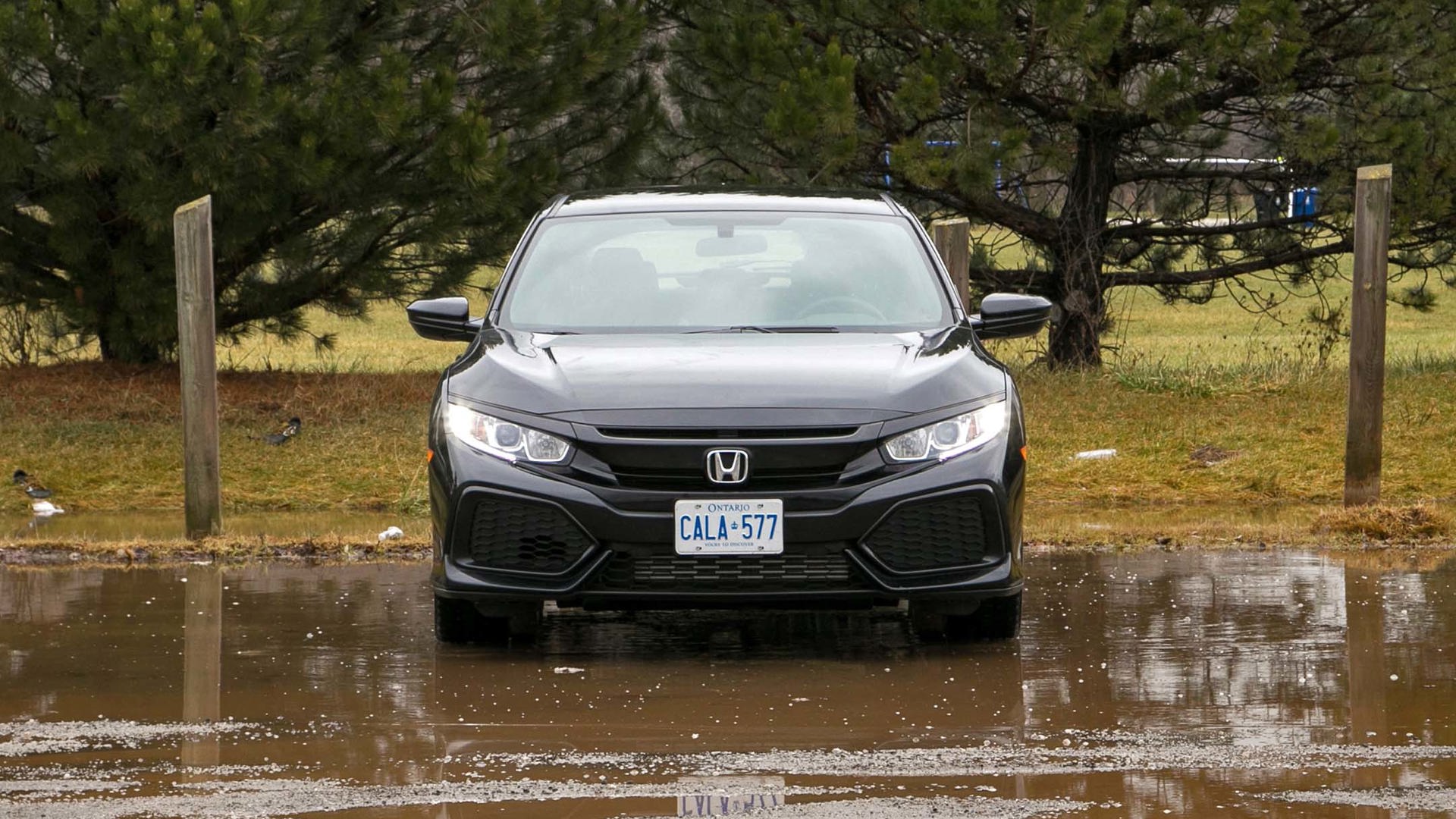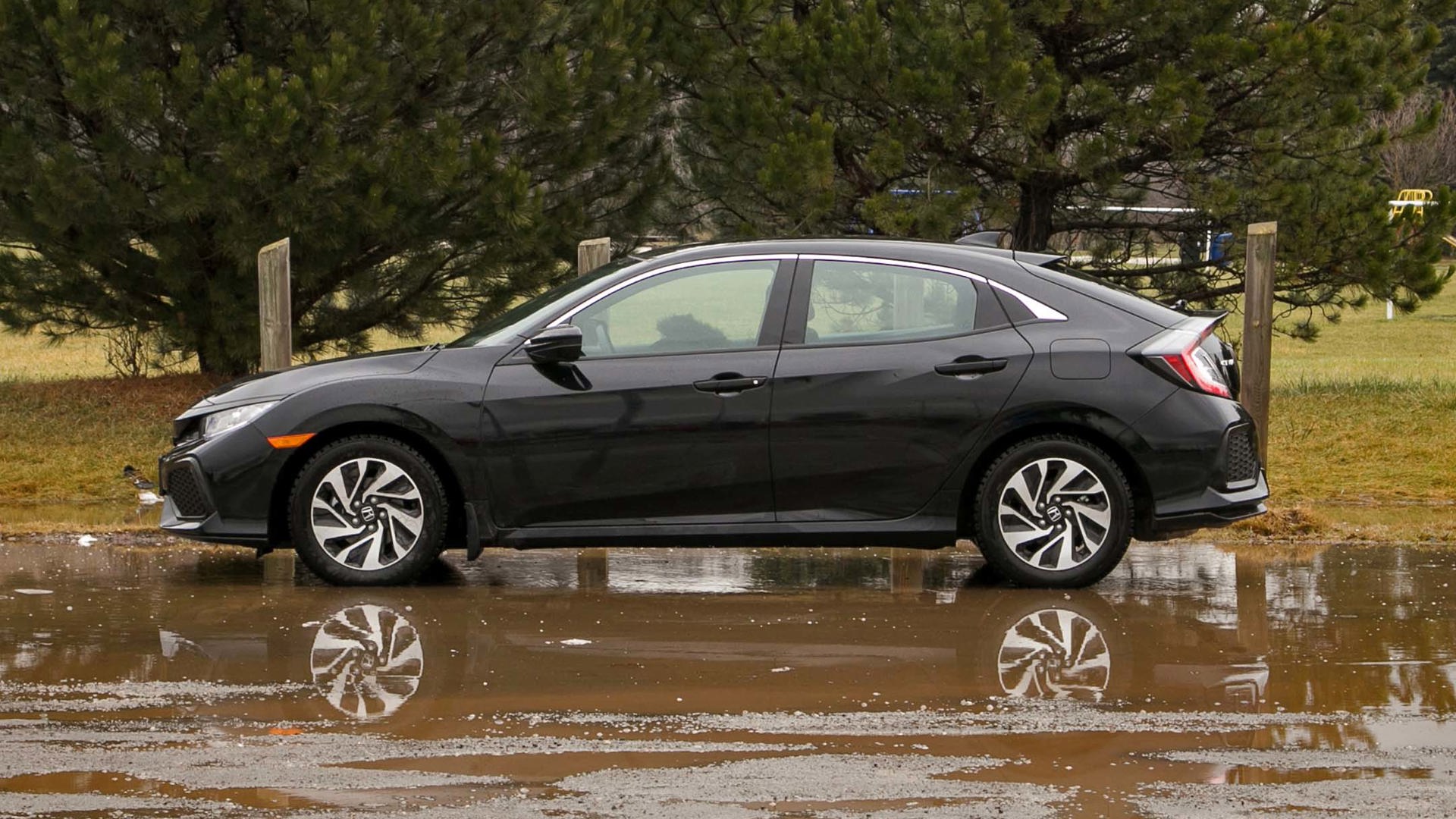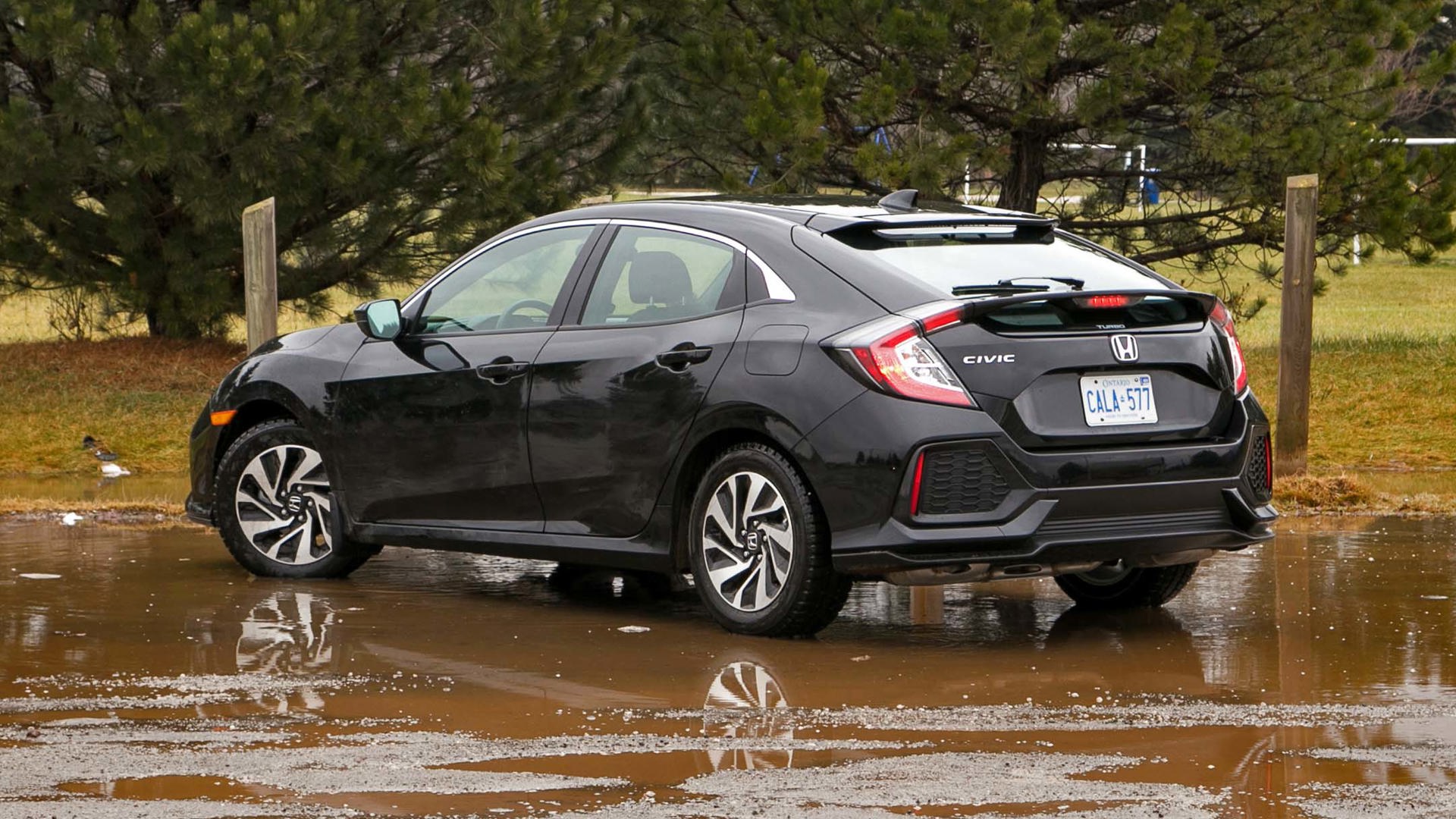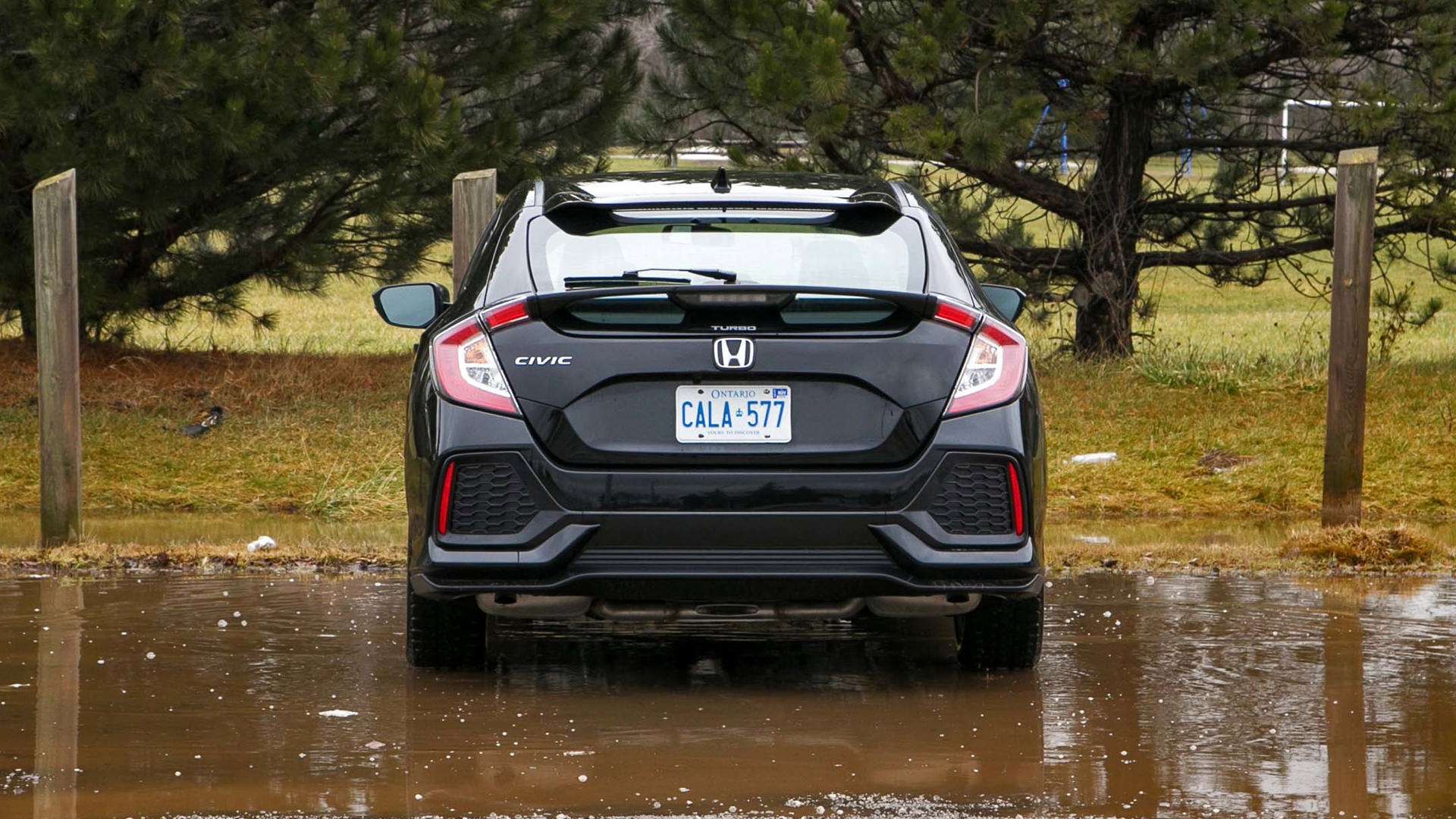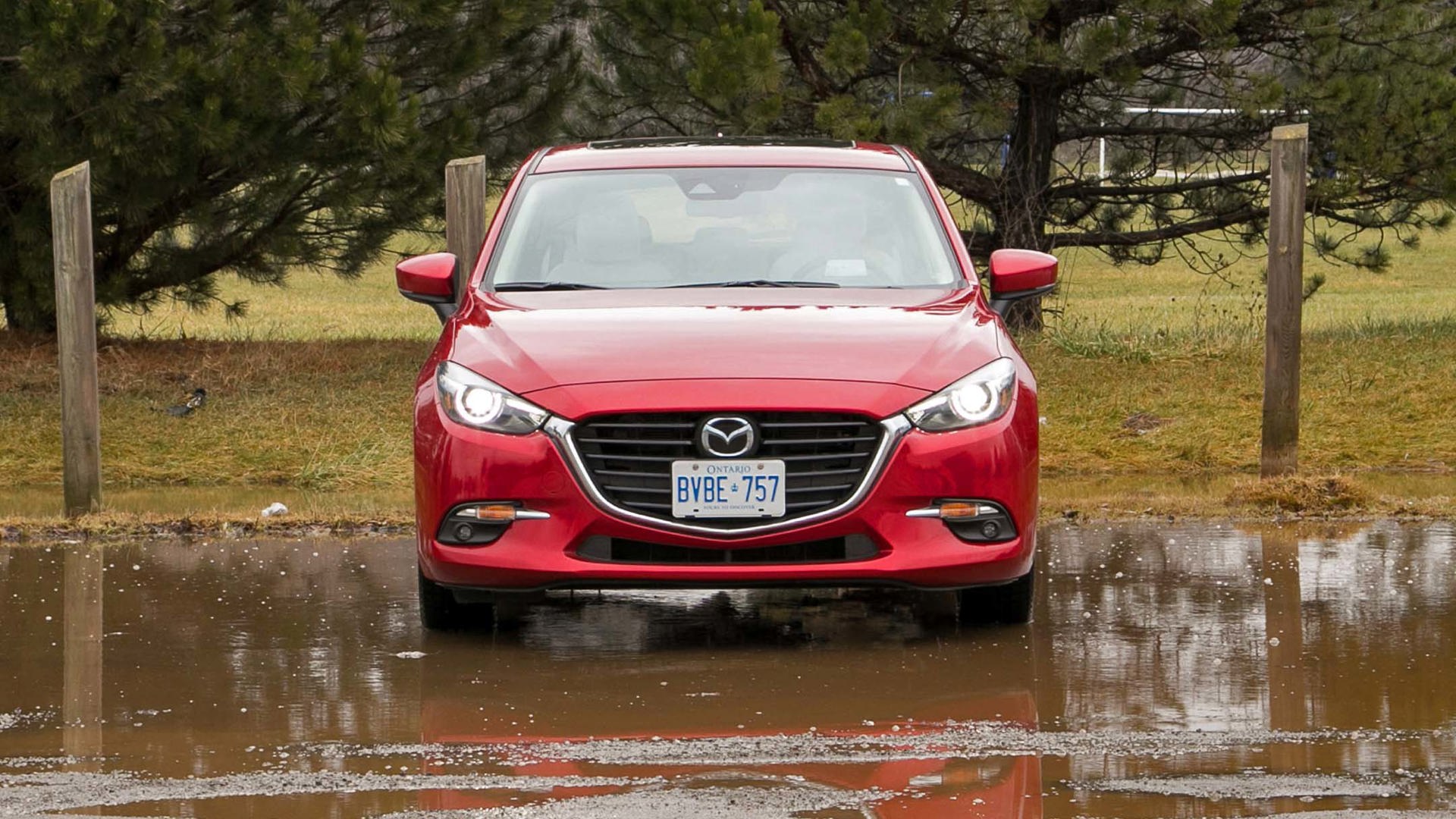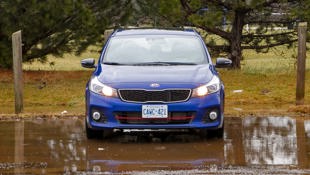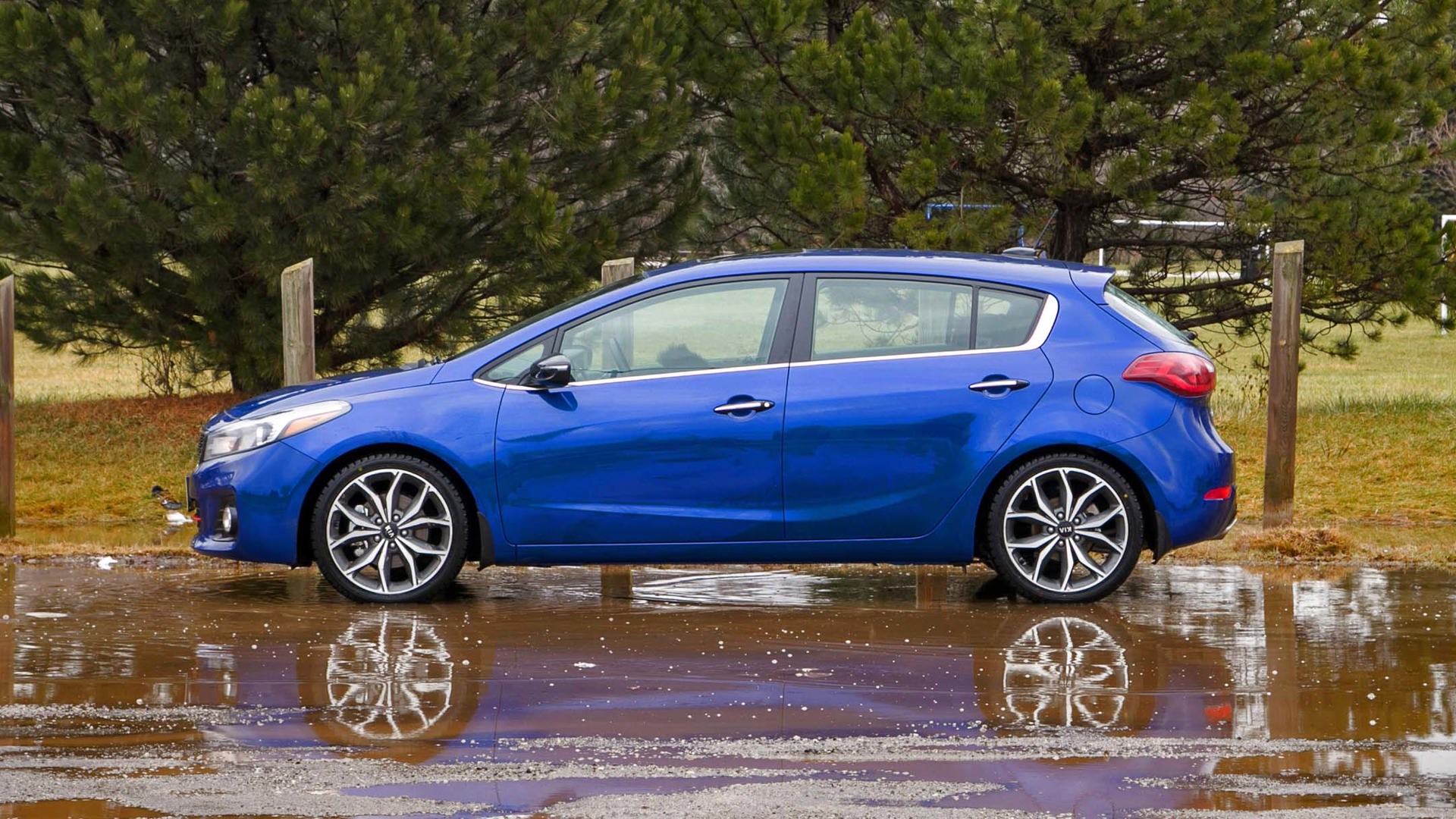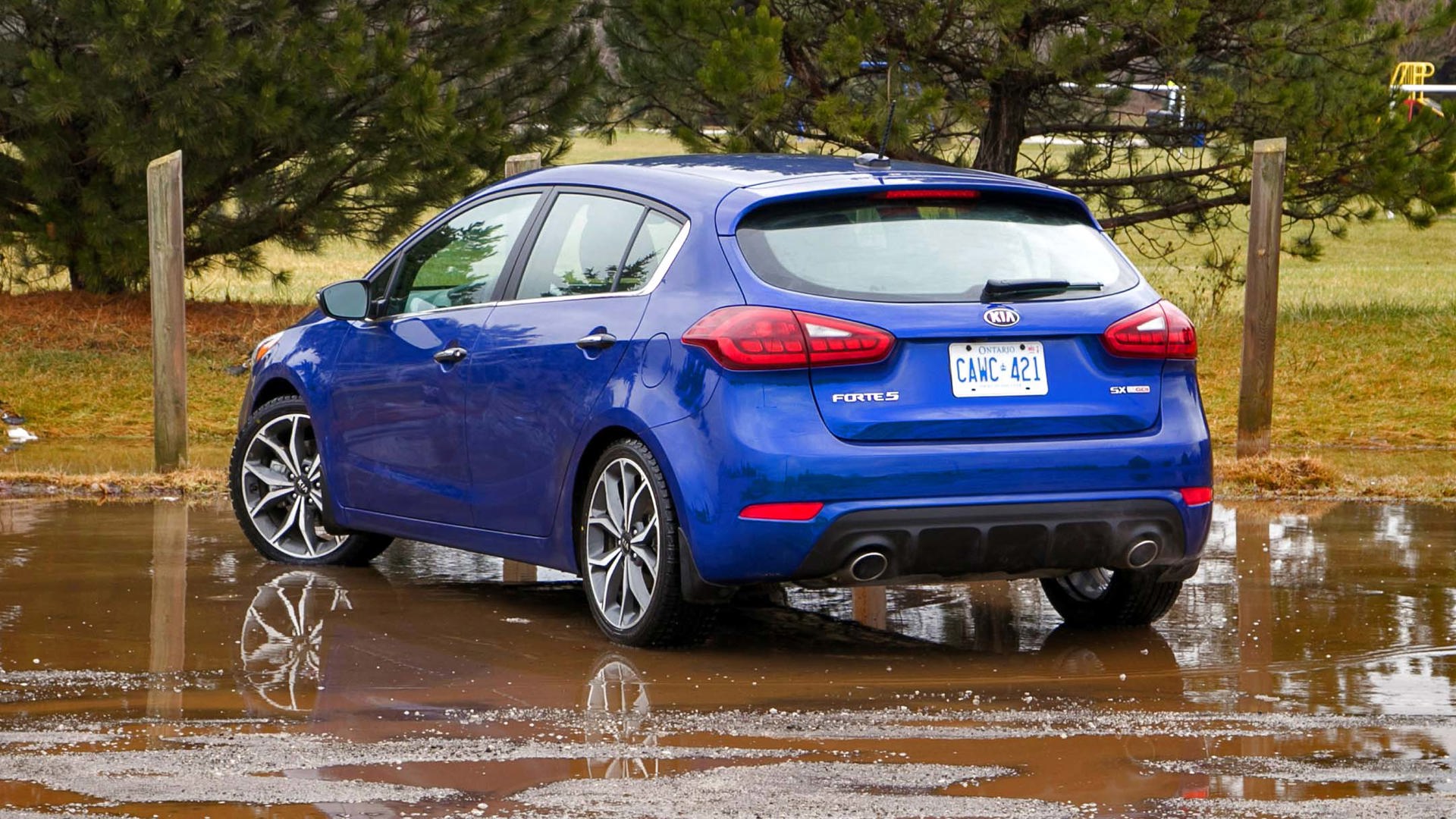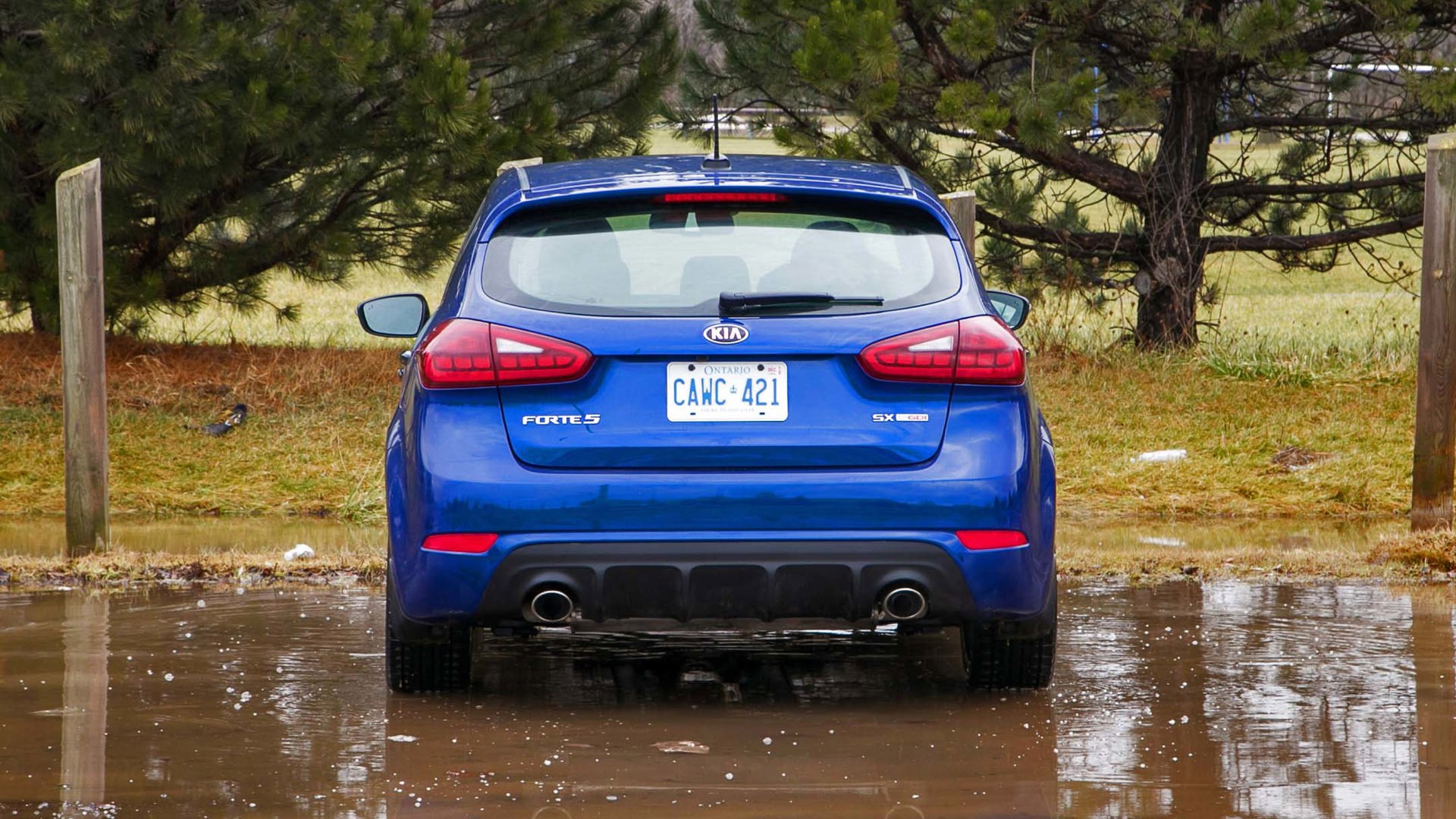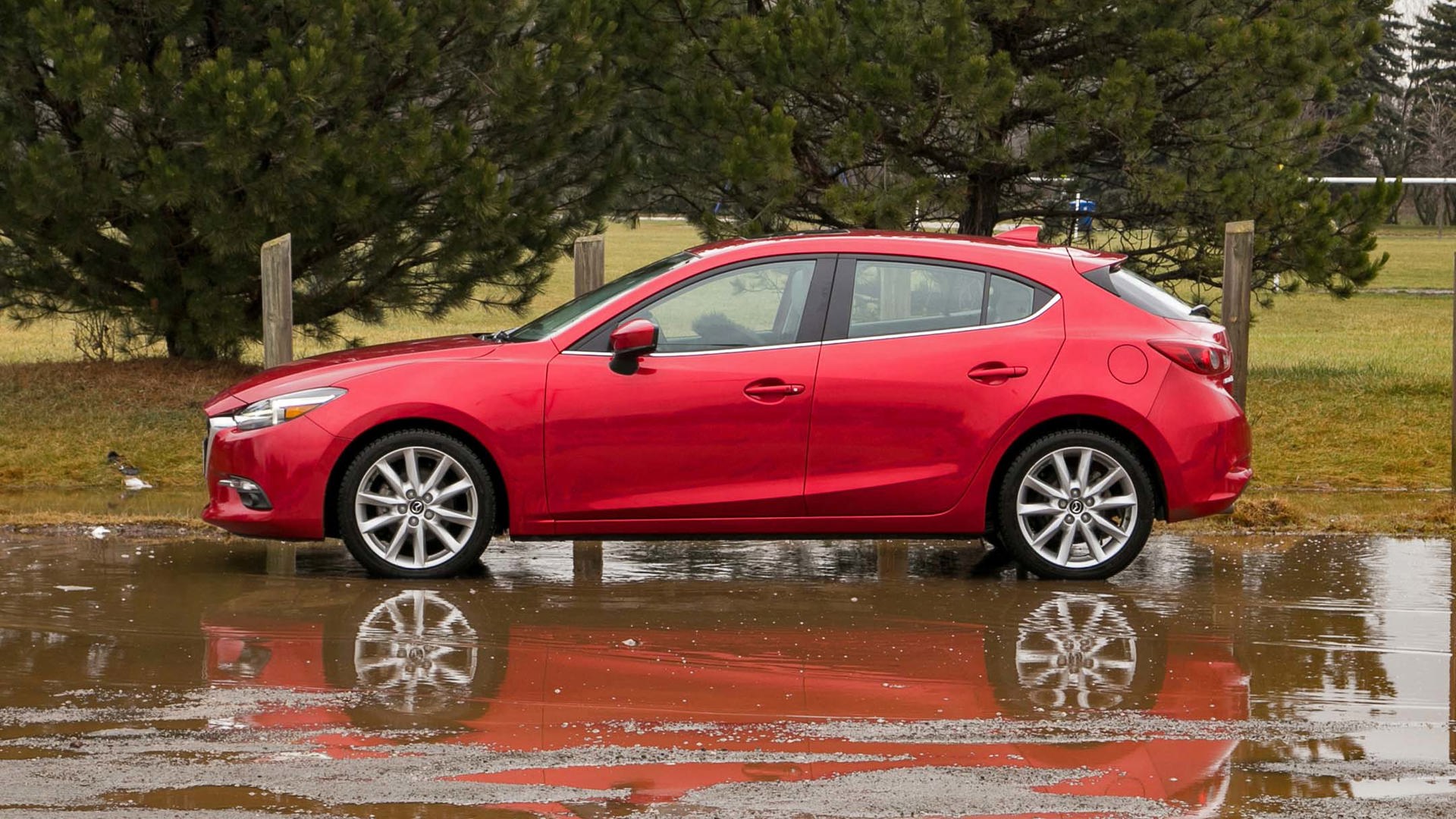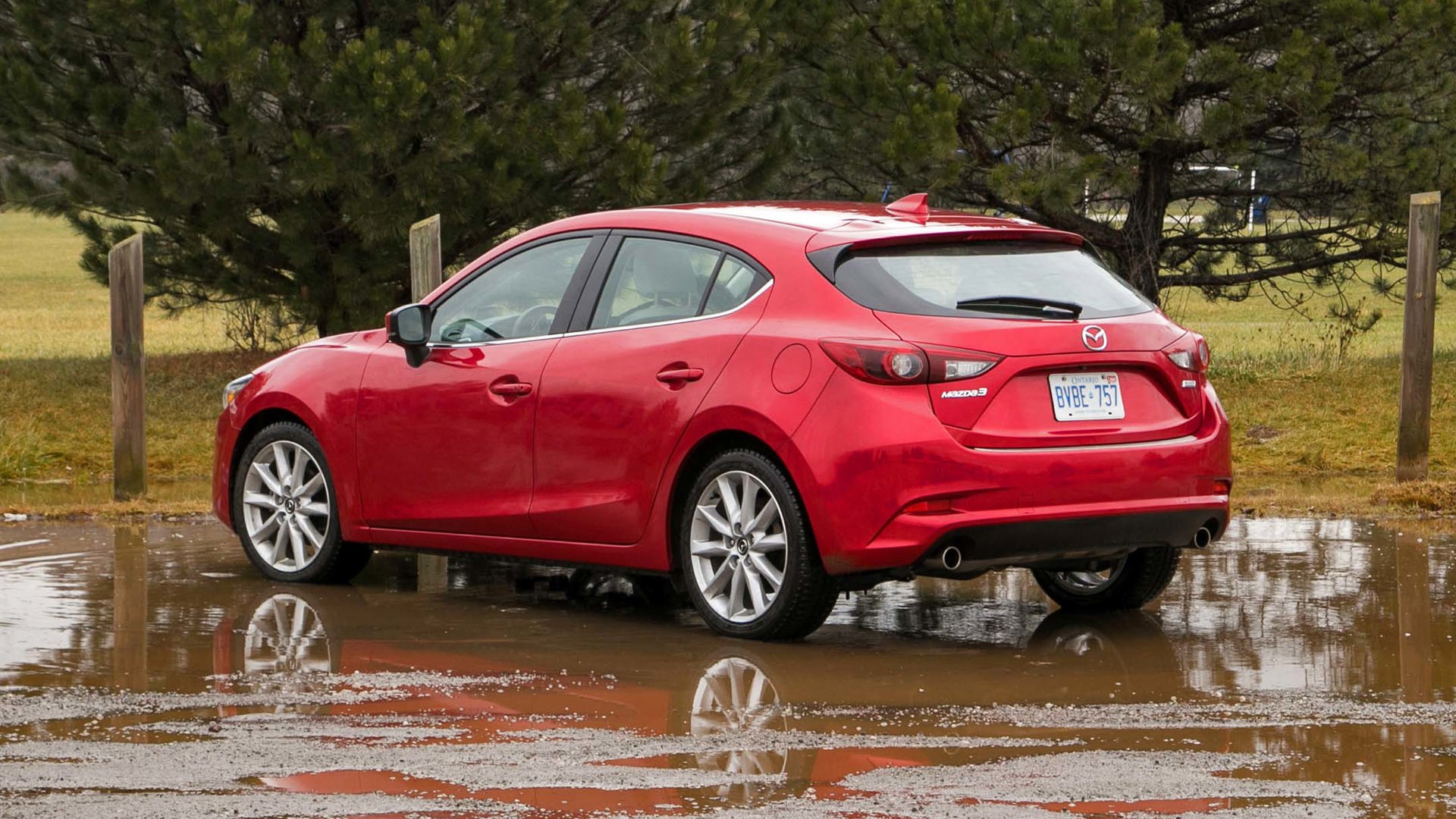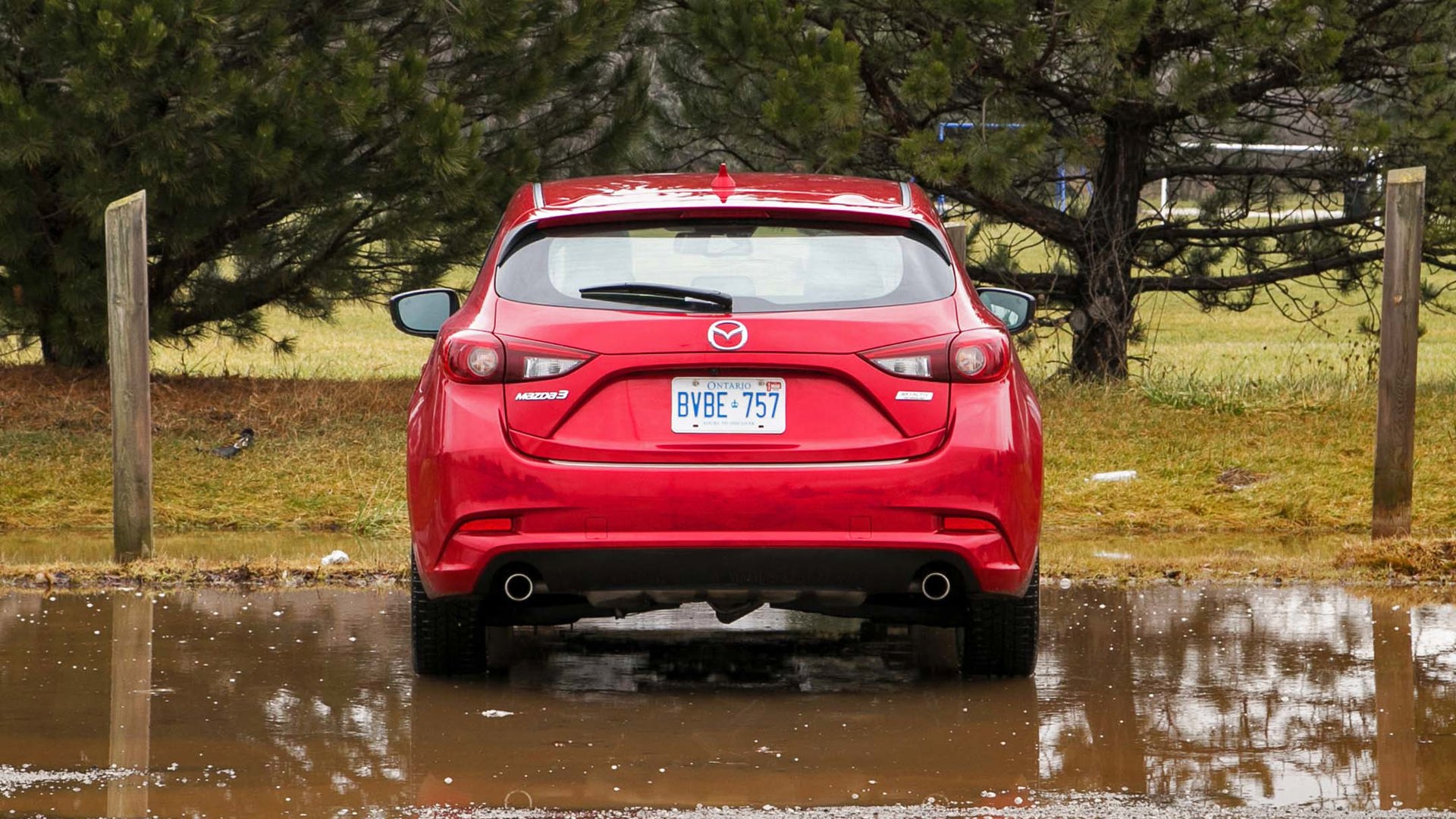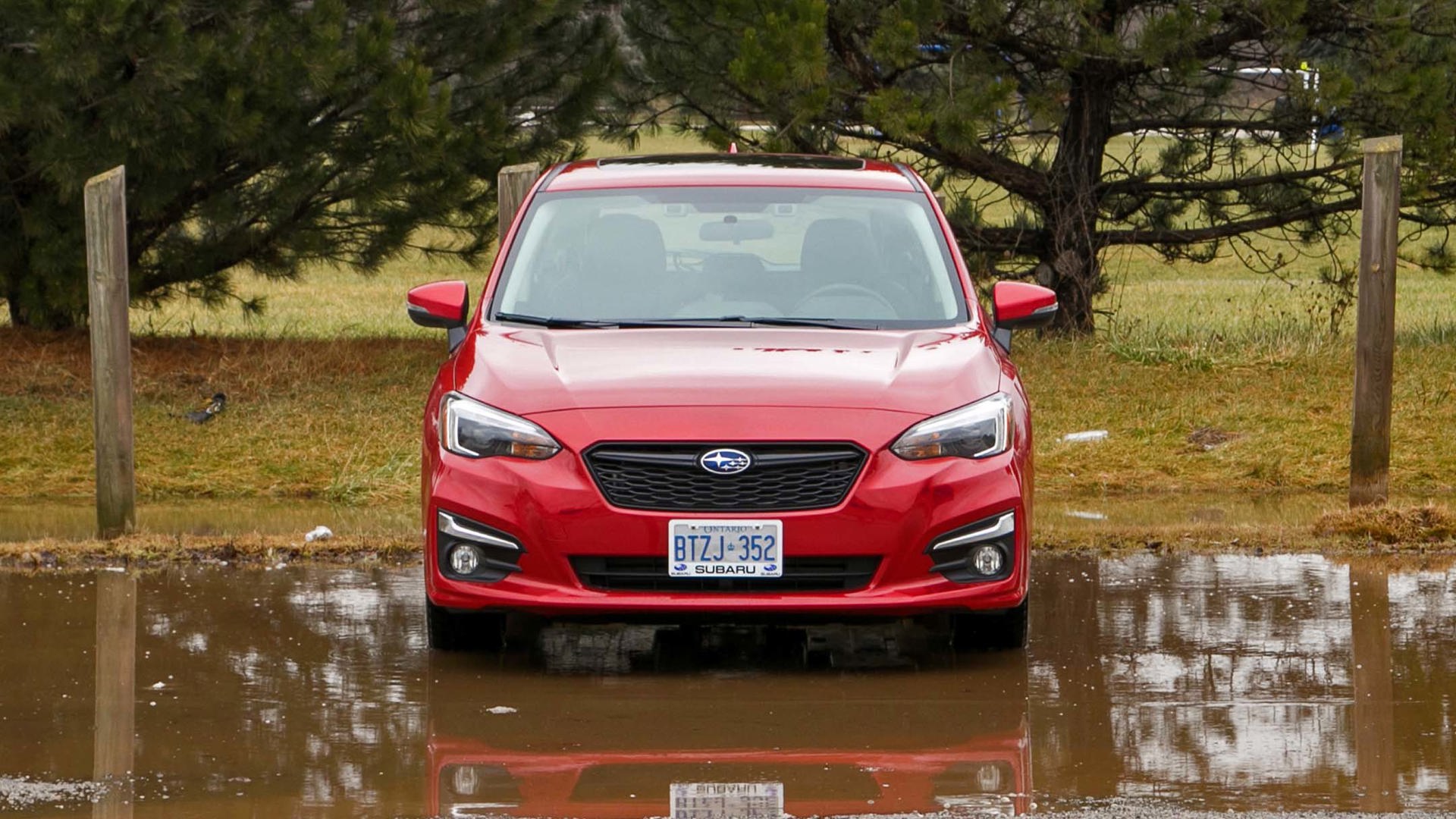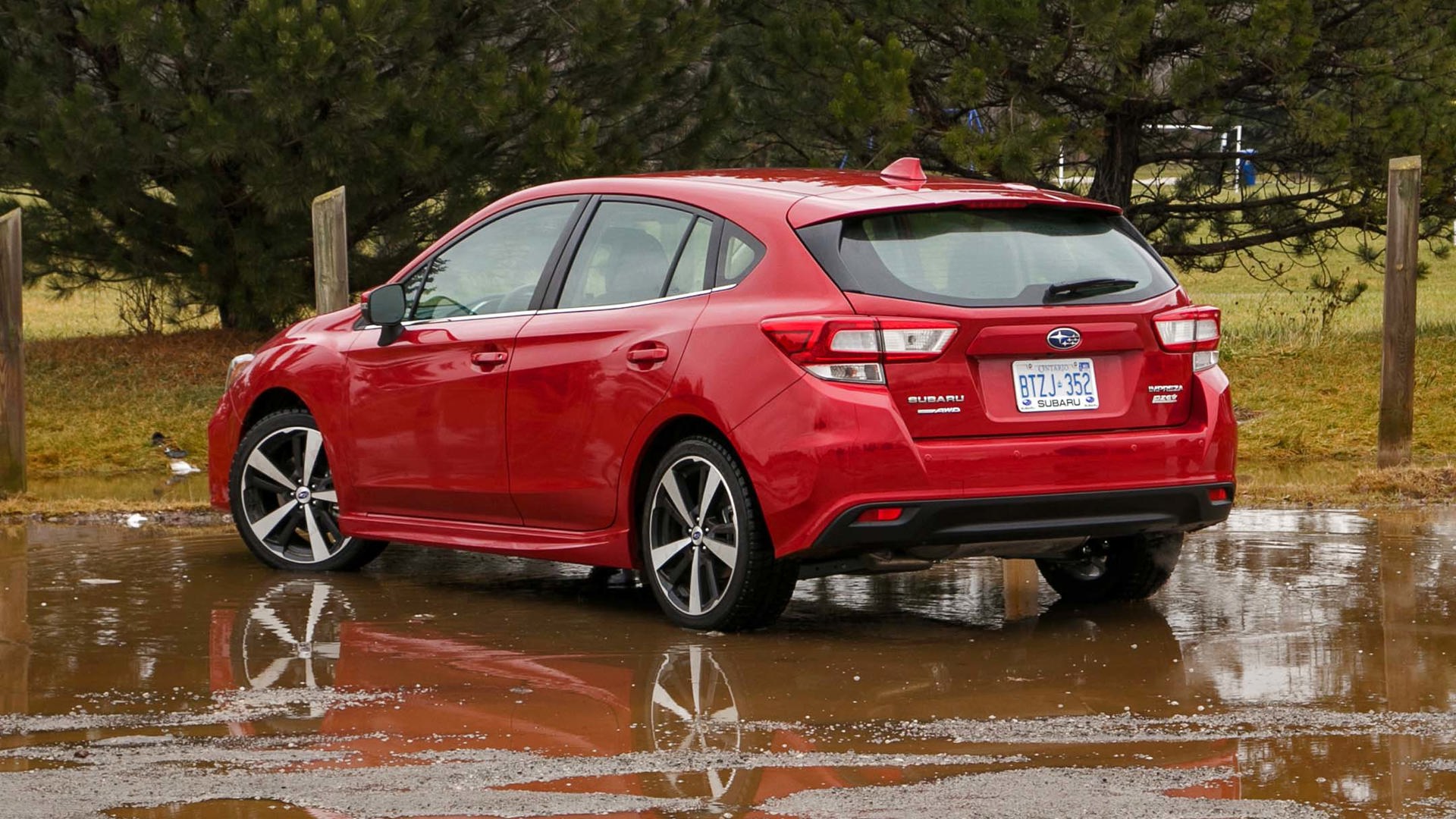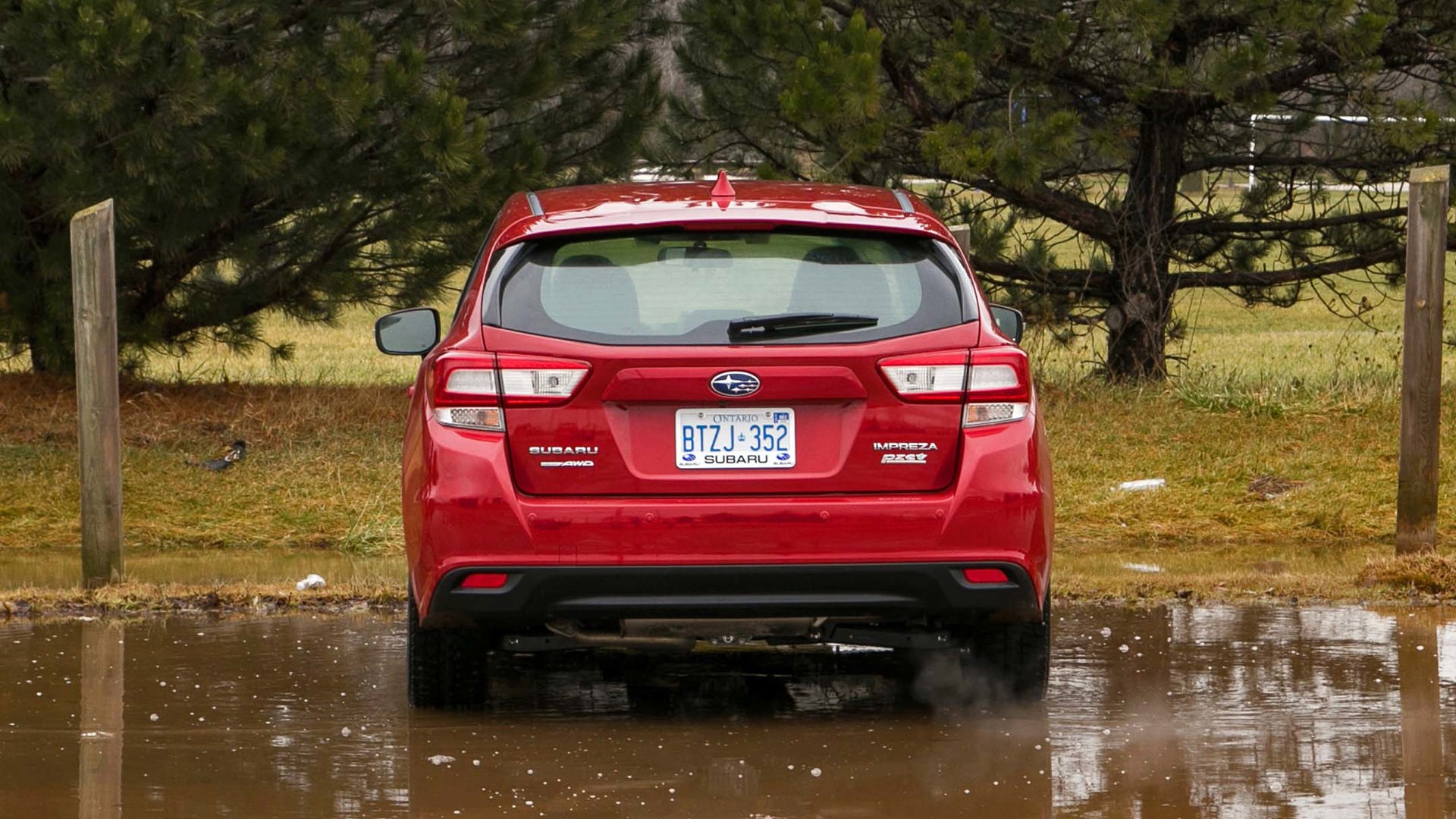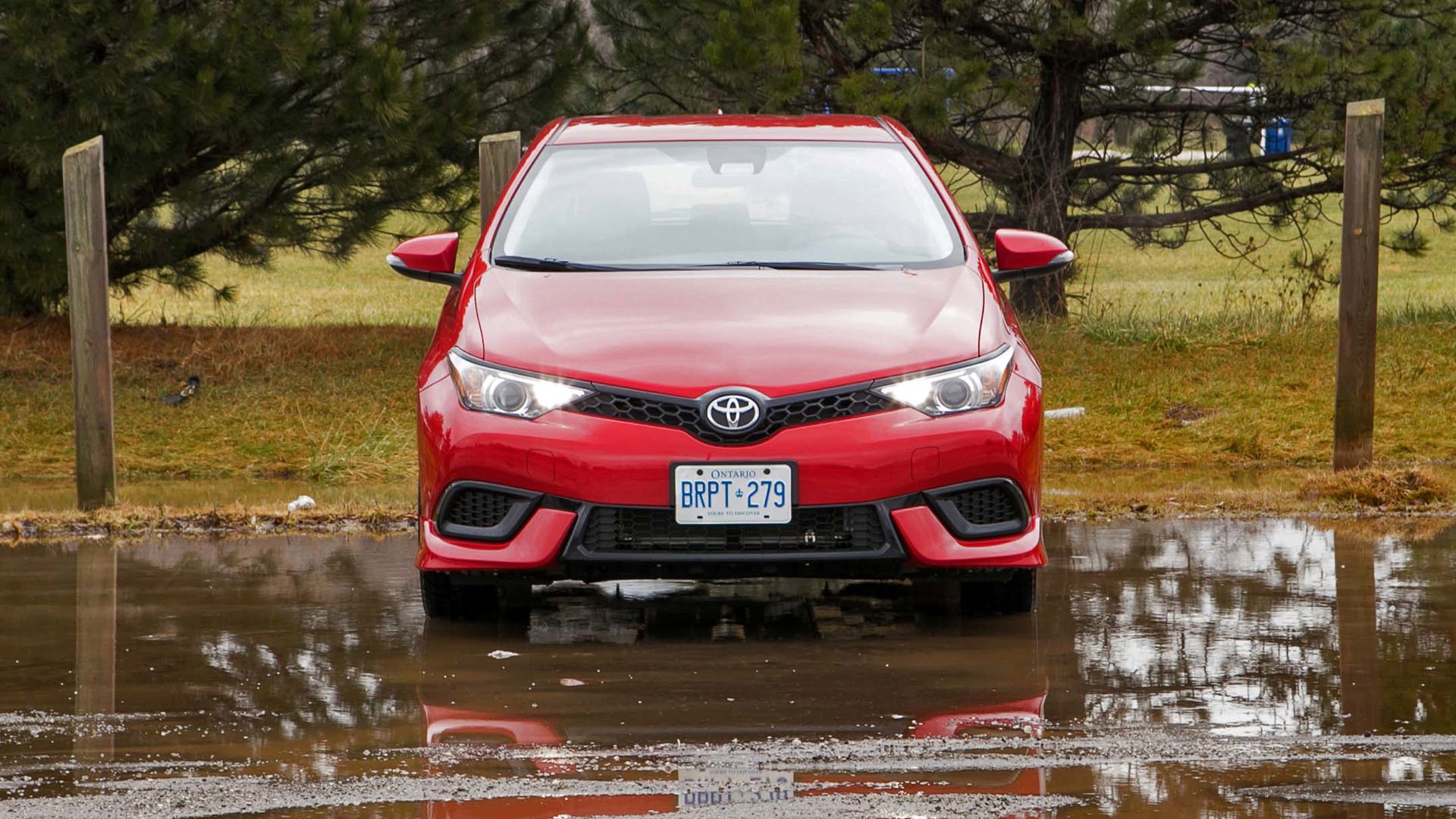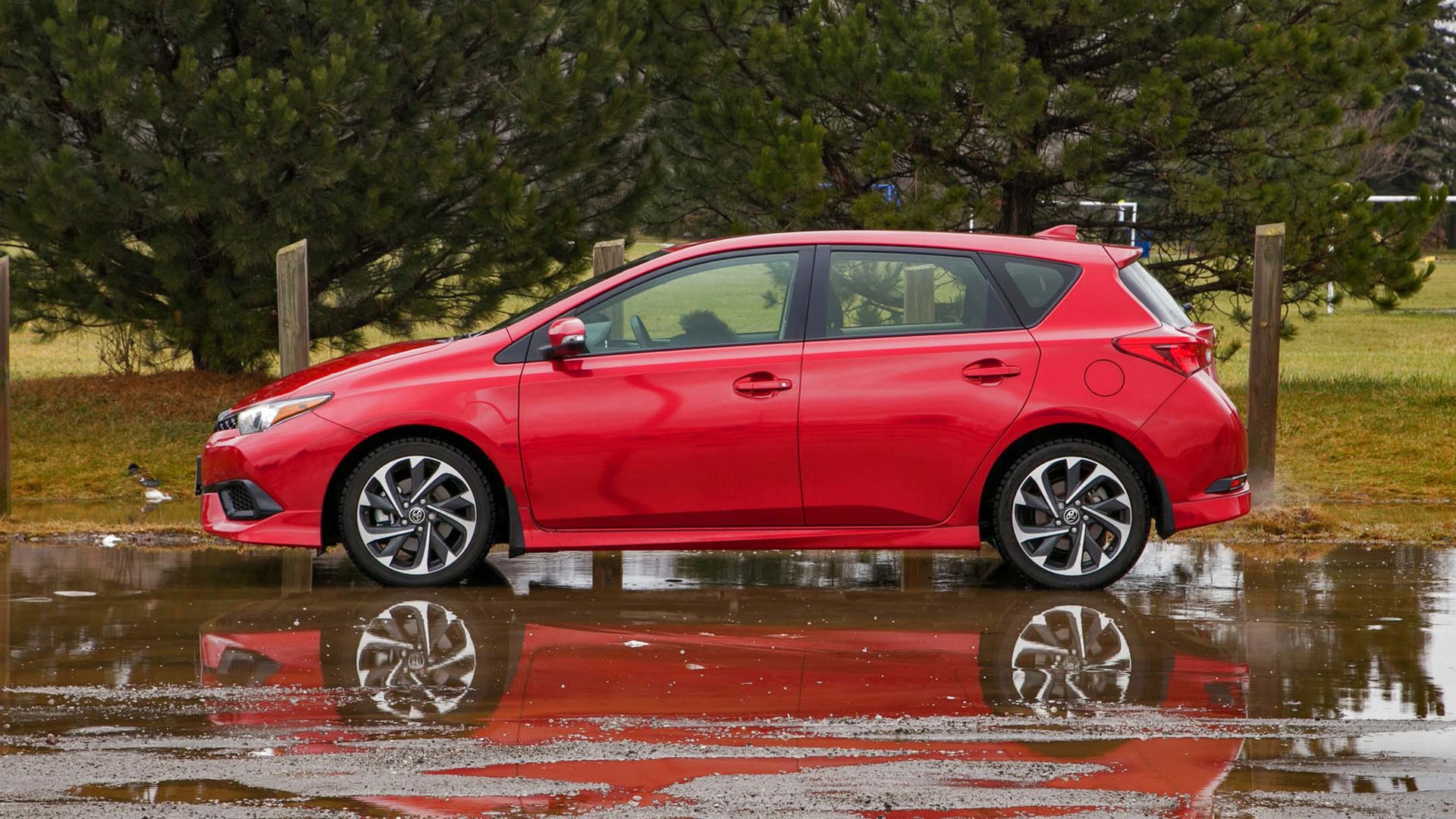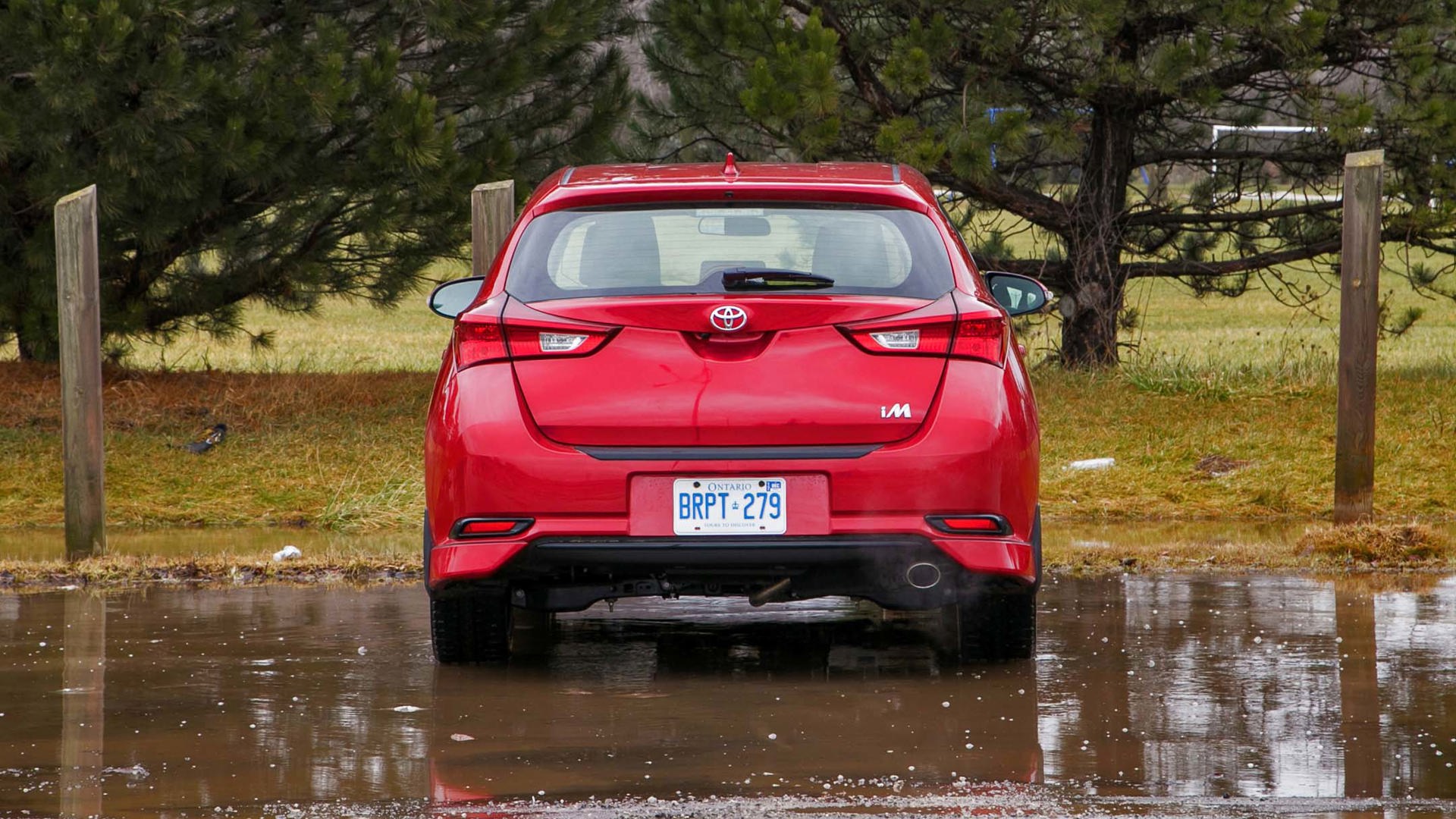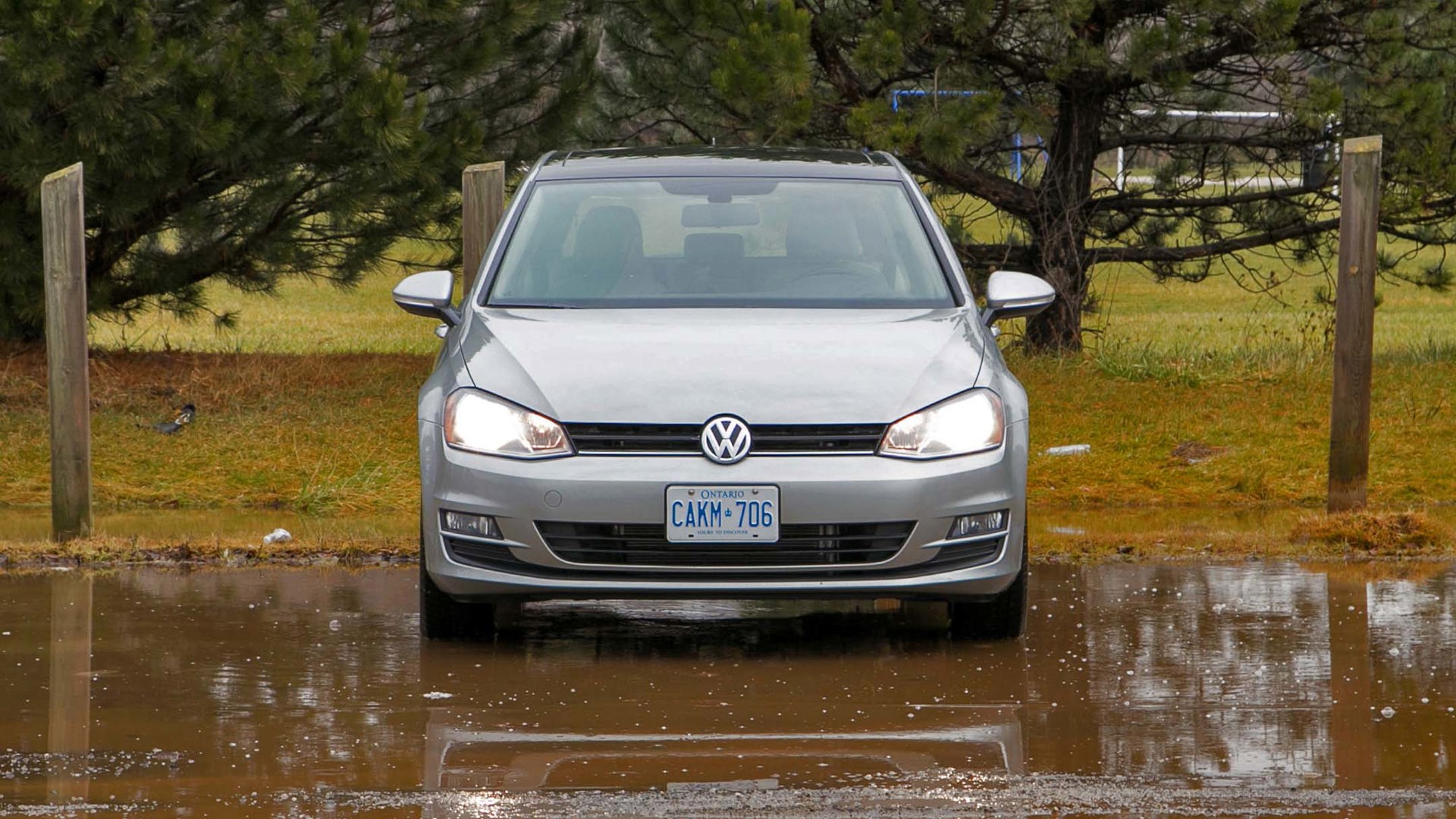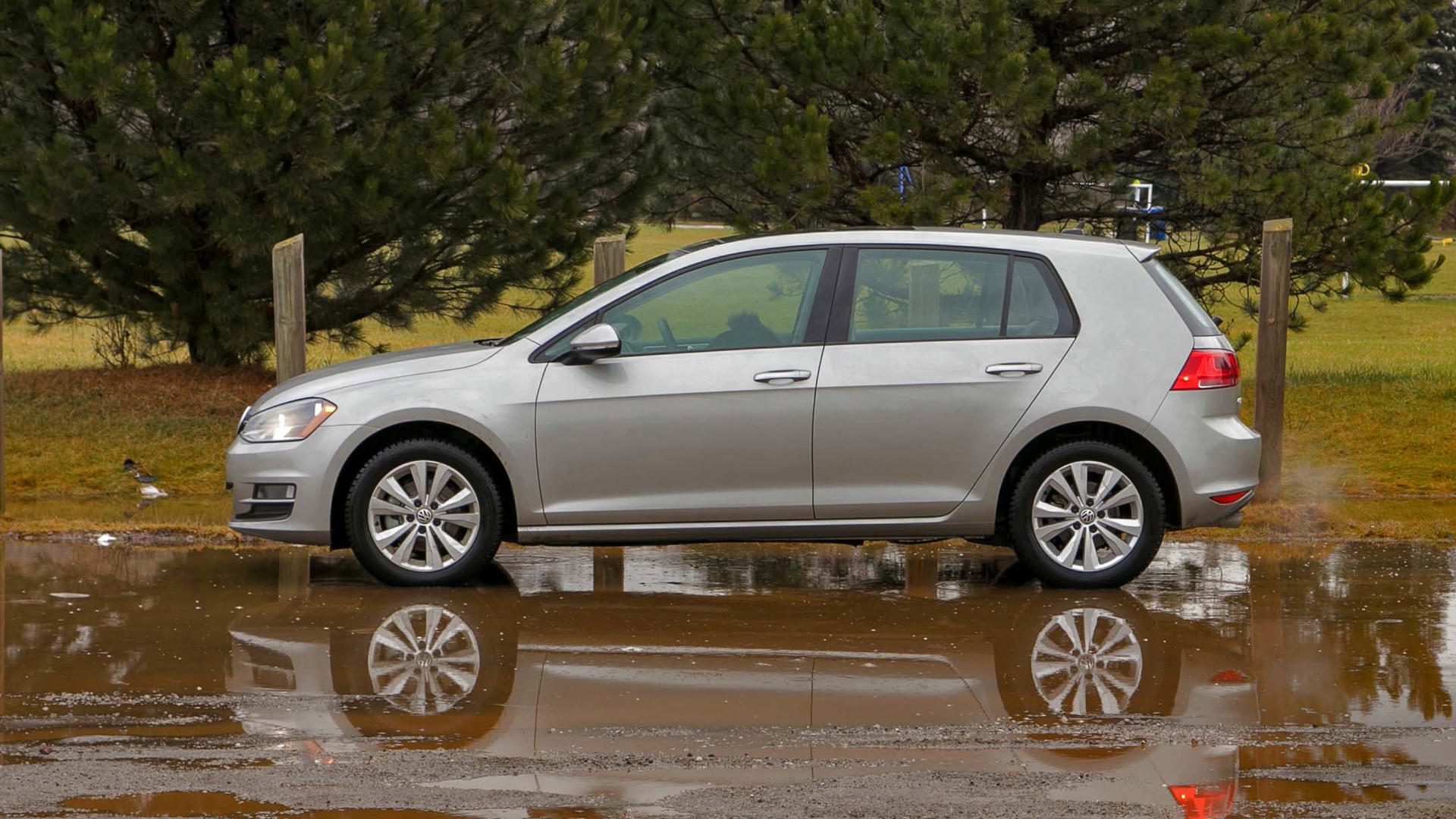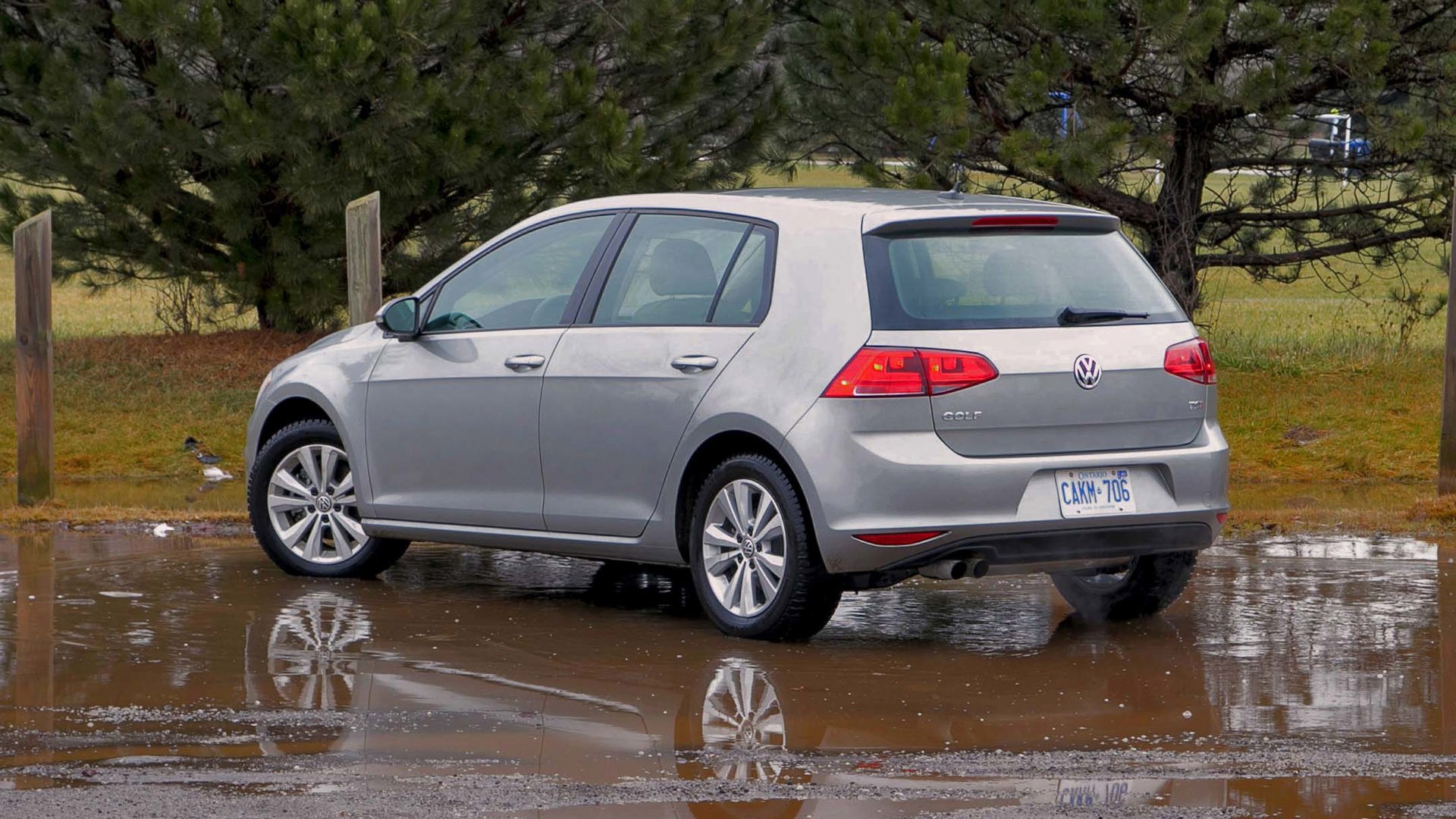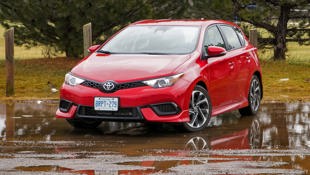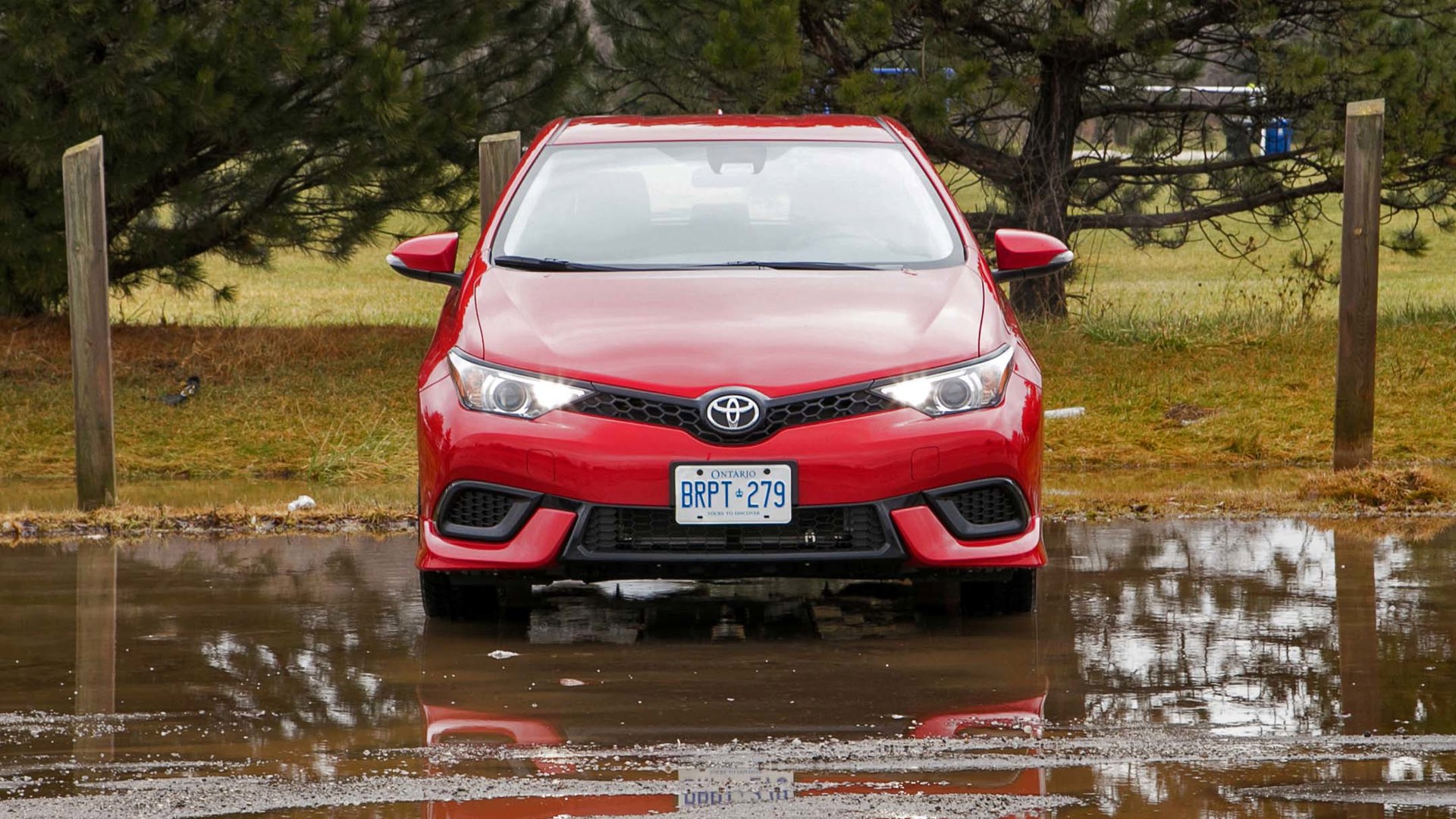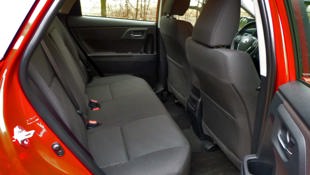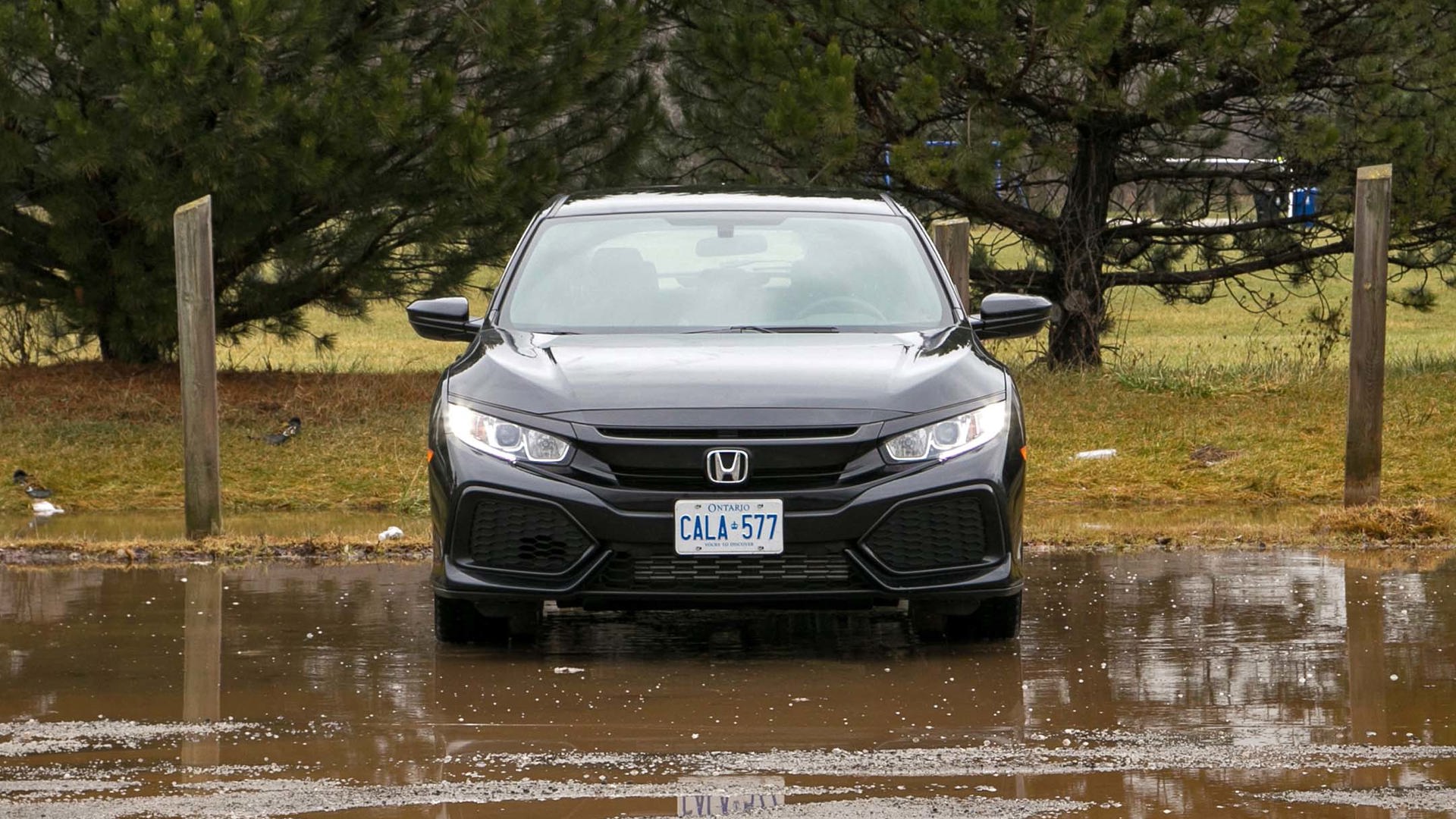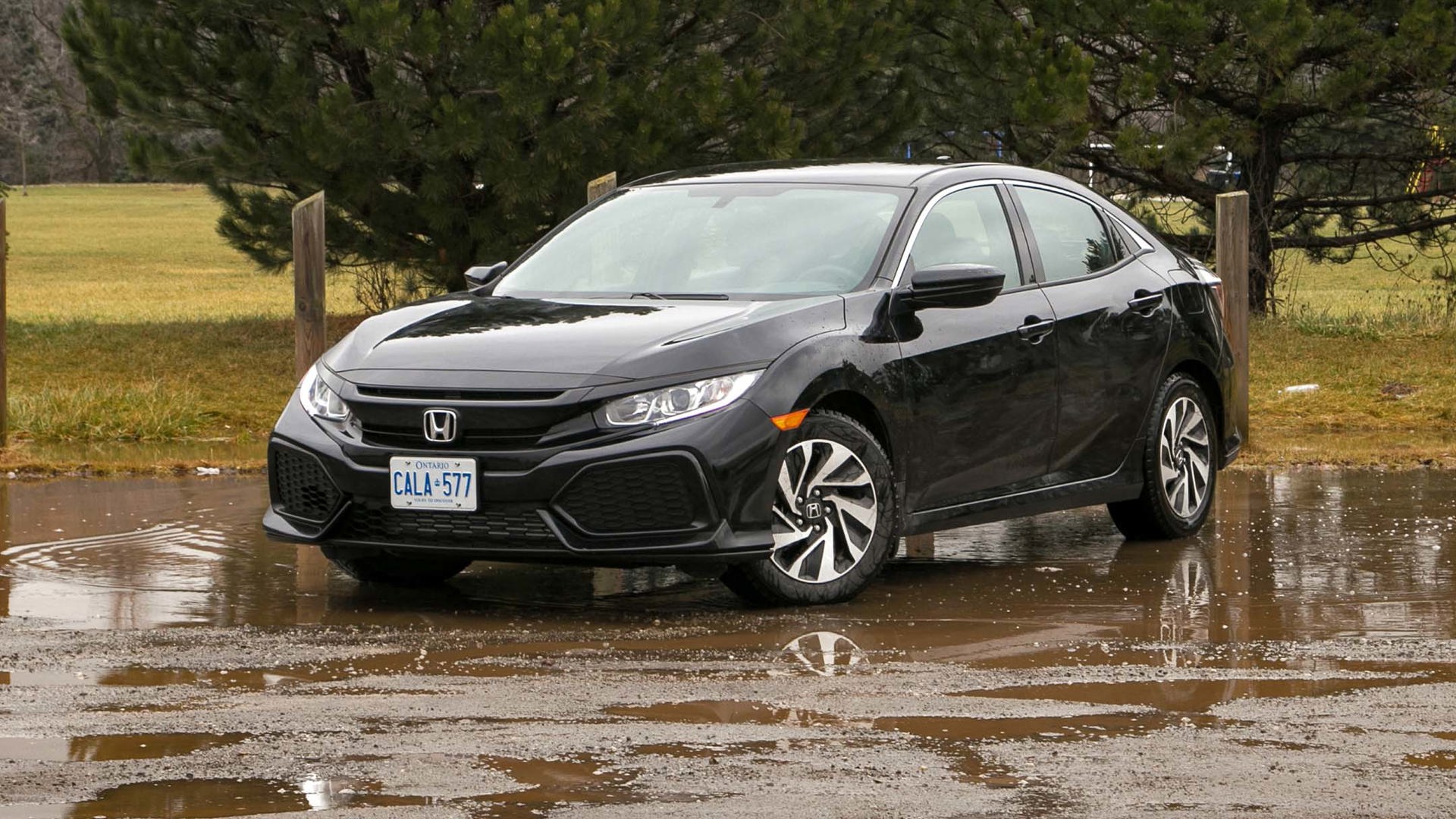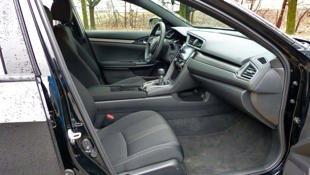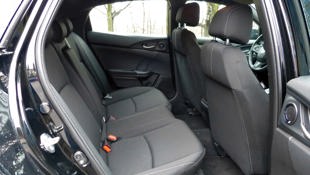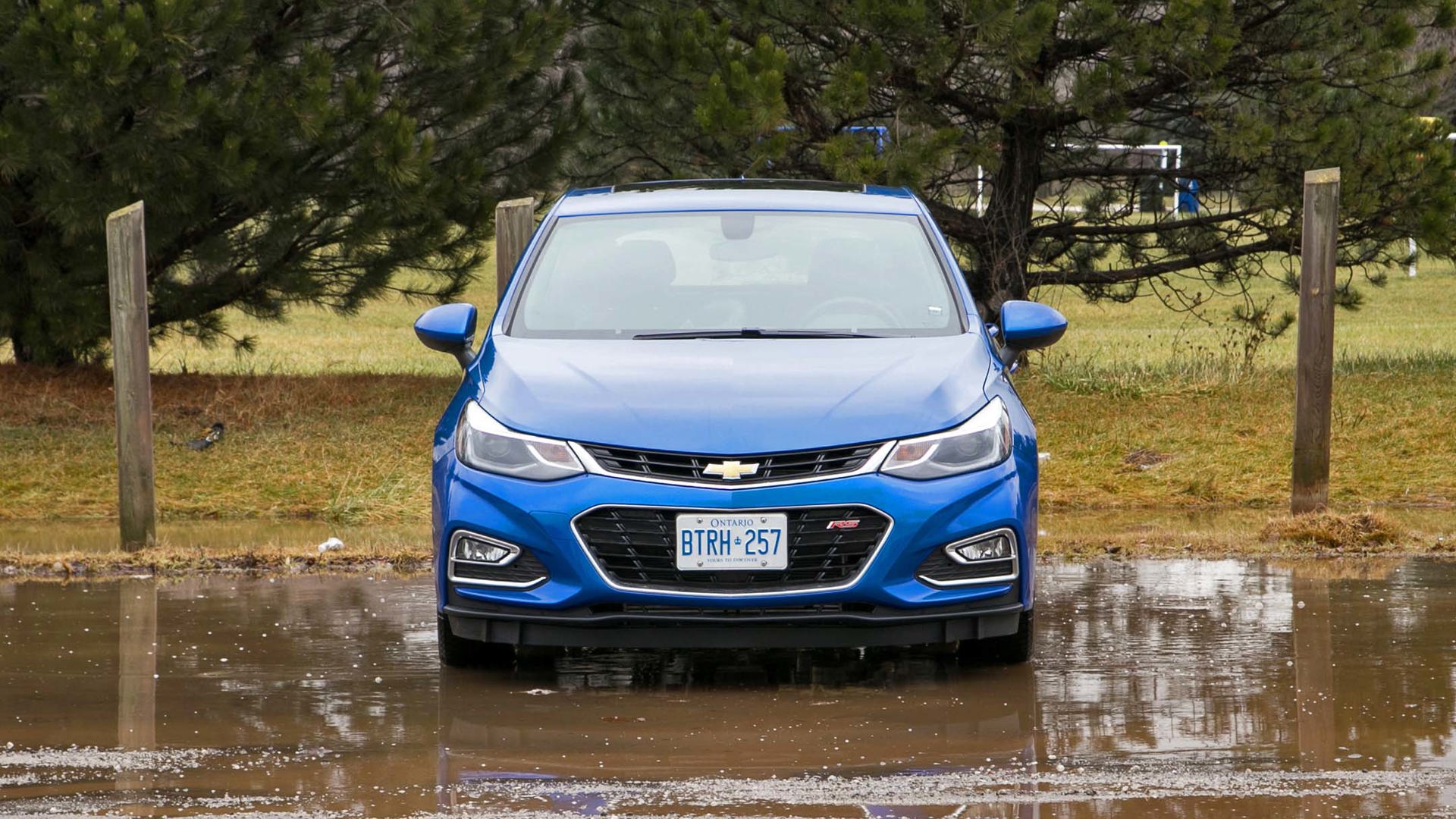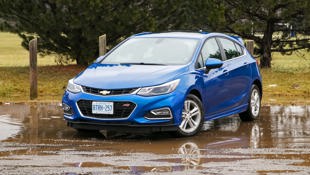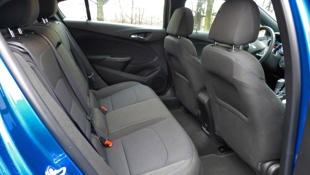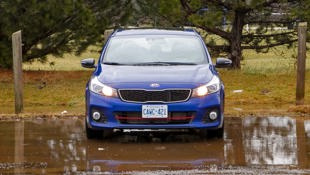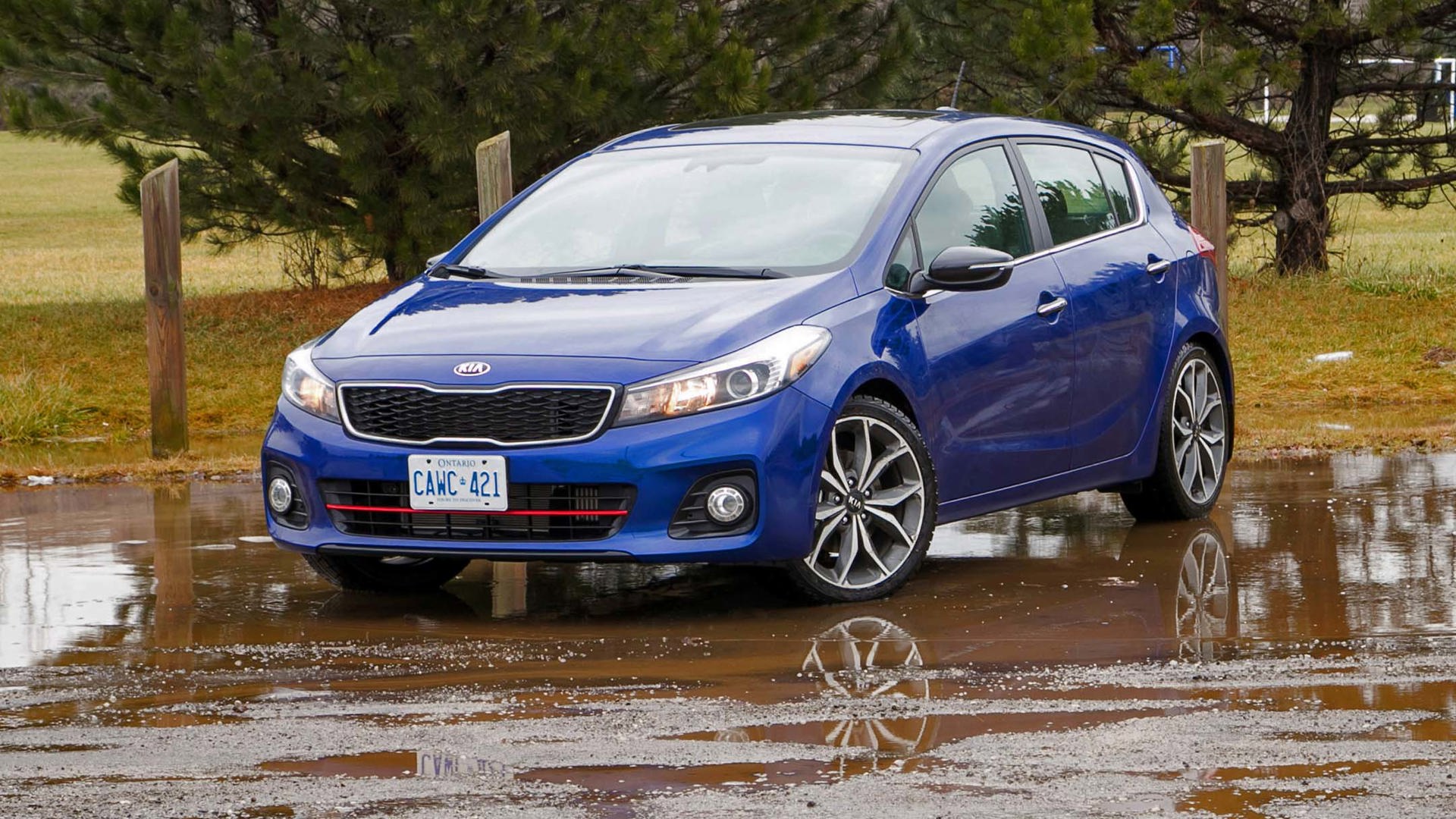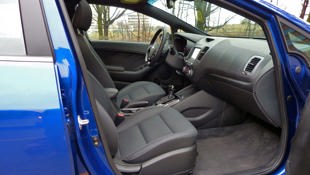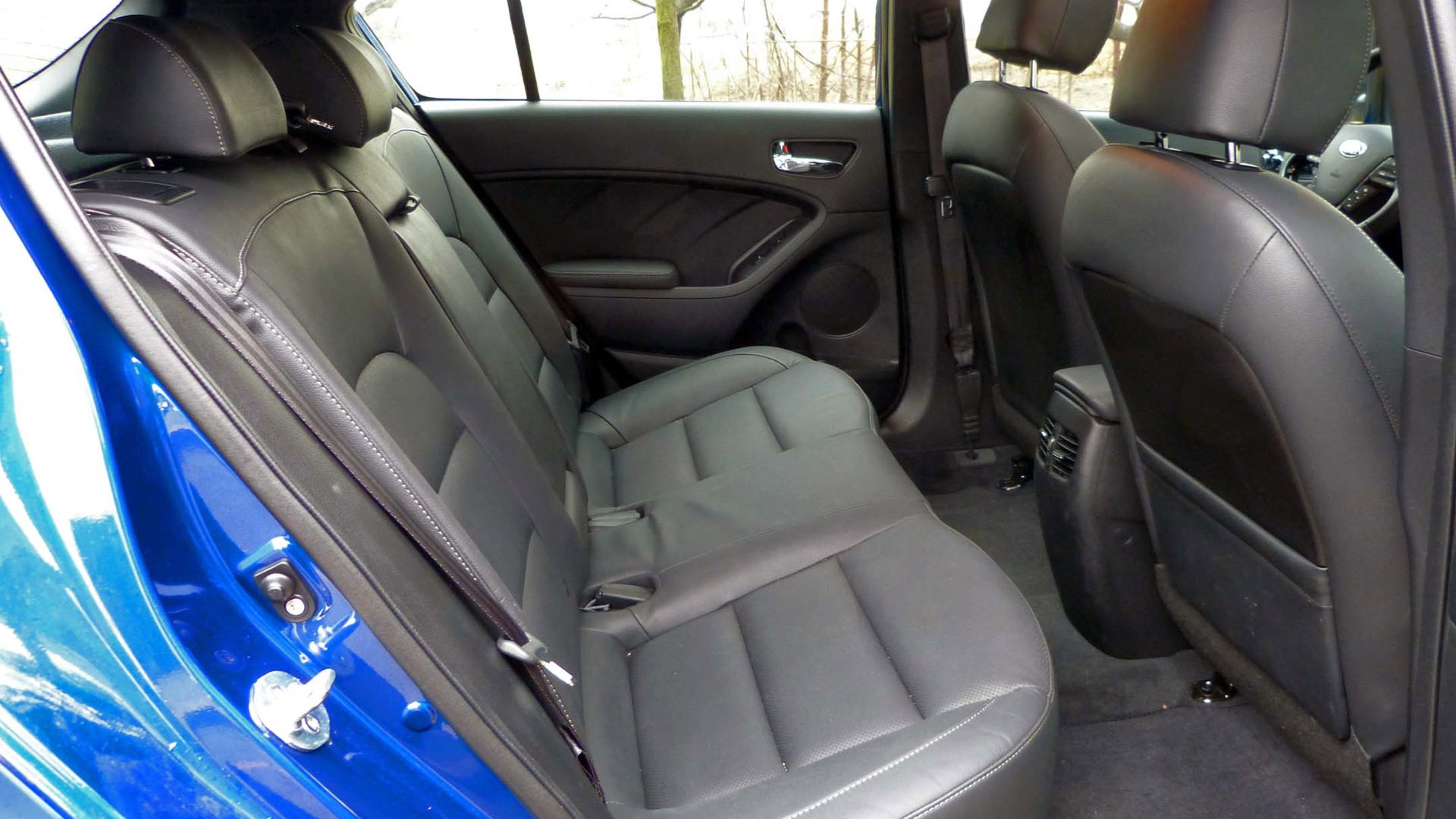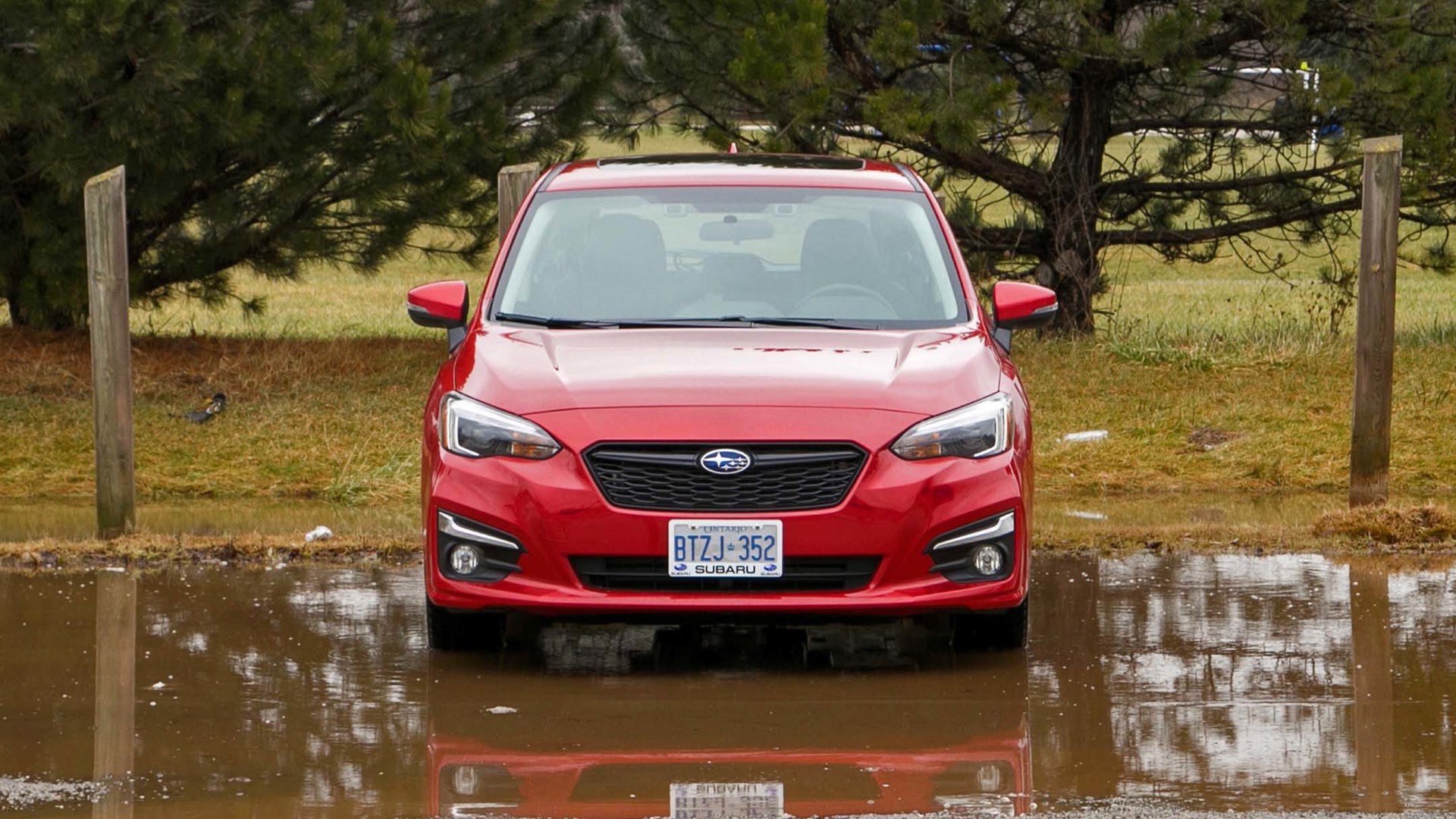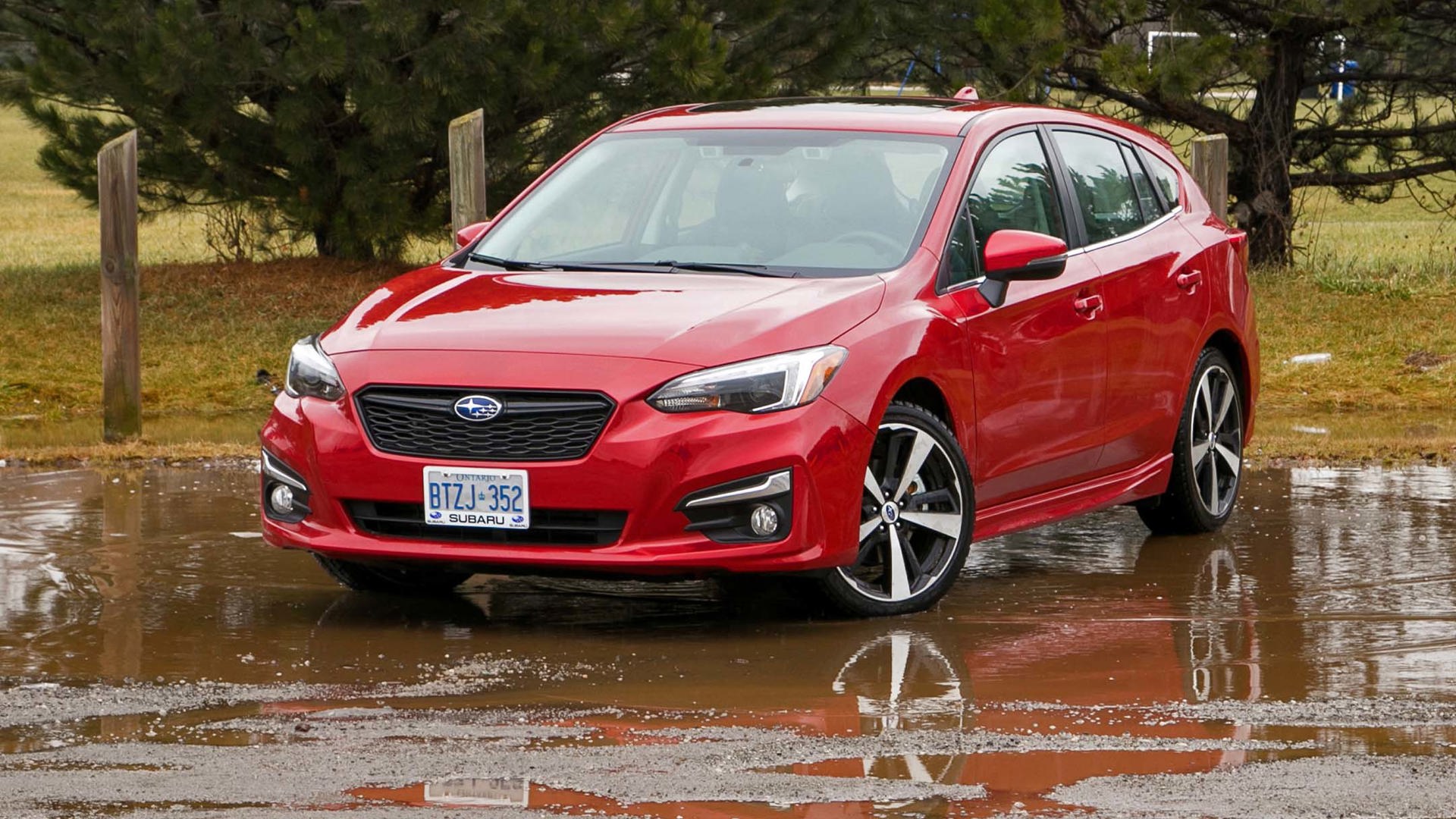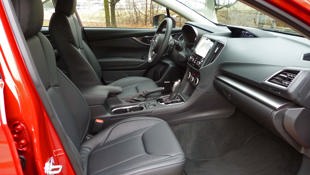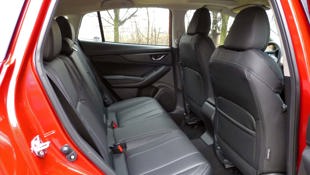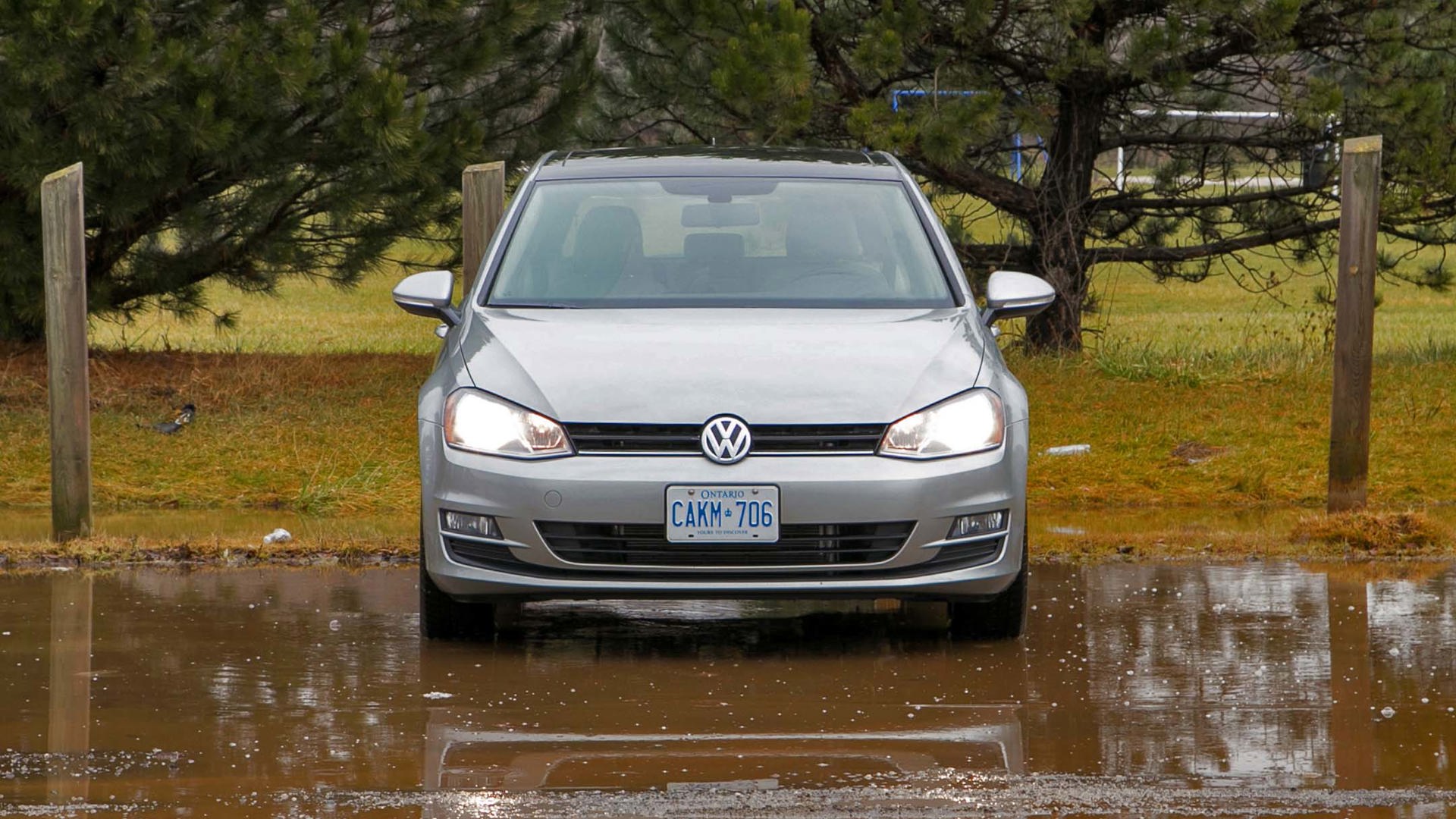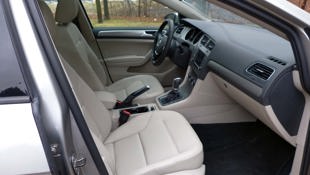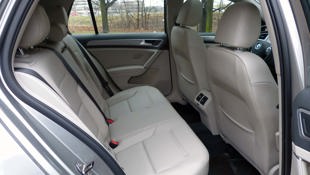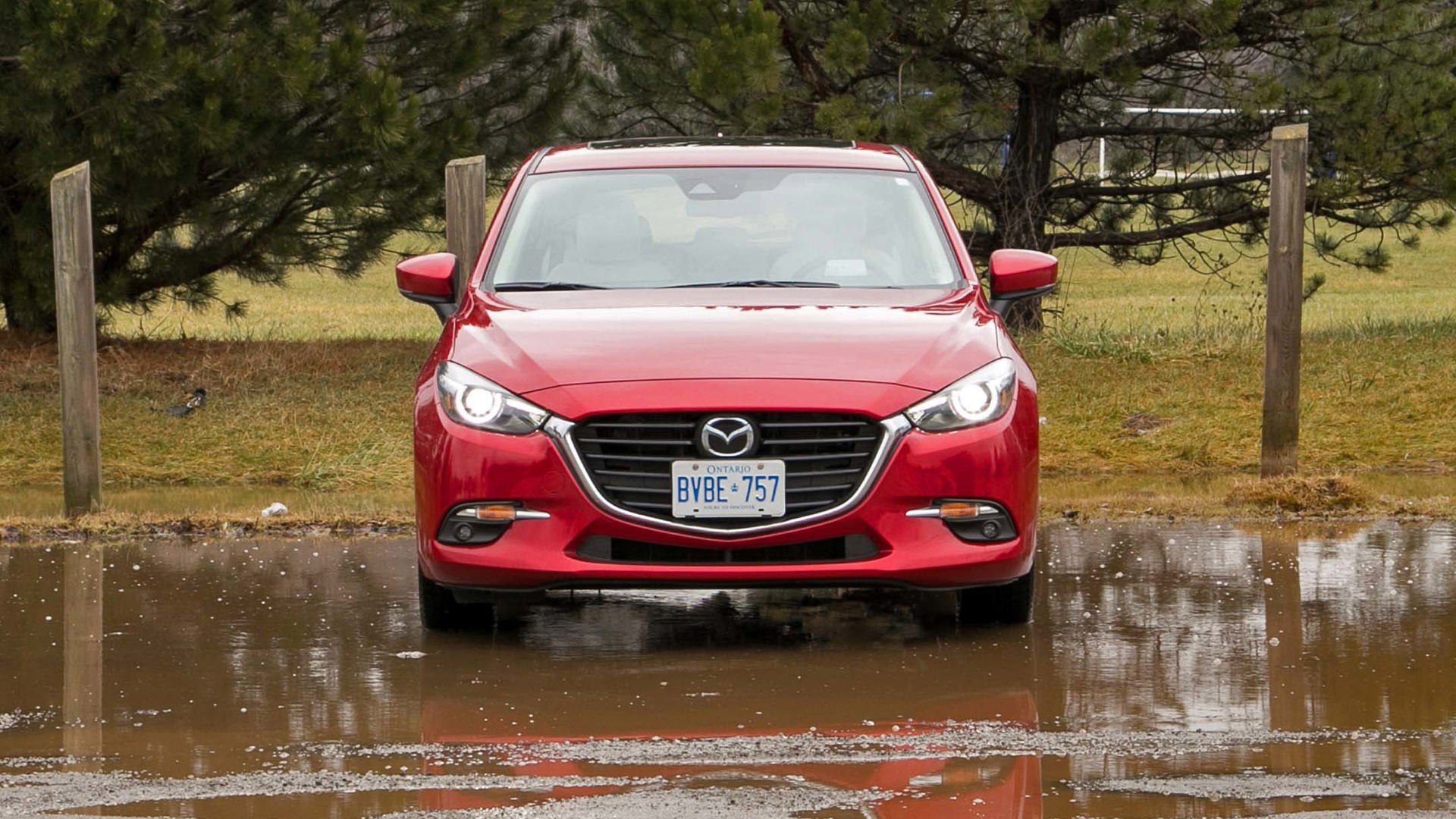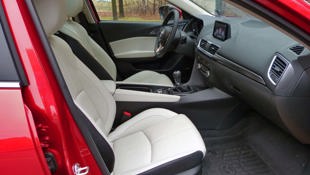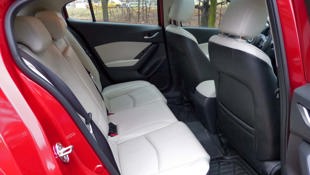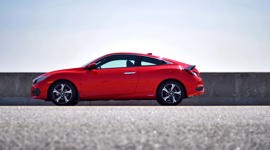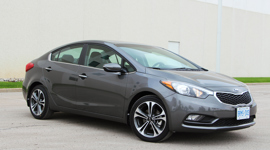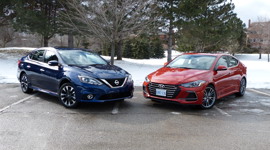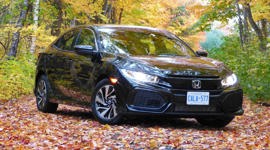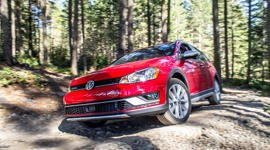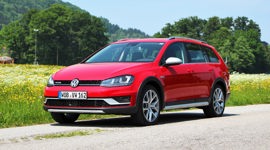Comparison Data
|
2017 Honda Civic
|
2017 Toyota Corolla iM
|
2017 Chevrolet Cruze
|
2017 Kia Forte5
|
2017 Volkswagen Golf
|
2017 Subaru Impreza 5-Door
|
2017 Mazda3
|
|---|---|---|---|---|---|---|
|
Engine Displacement
1.5T, 6MT
|
1.8L, CVT
|
1.4T, 6AT
|
1.6T, 7DCT
|
1.8T, 6AT
|
2.0L, CVT, AWD
|
2.5L, 6MT
|
|
Engine Cylinders
4
|
4
|
4
|
4
|
4
|
4
|
4
|
|
Peak Horsepower
174 hp @5,500 rpm
|
137 hp @ 6,100 rpm
|
153 hp @ 5,600 rpm
|
201 hp @ 6,000 rpm
|
170 hp @ 6,200 rpm
|
152 hp @6,000 rpm
|
184 hp @ 5,700 rpm
|
|
Peak Torque
167 lb-ft @ 1,800 rpm
|
126 lb-ft @ 4,000 rpm
|
177 lb-ft @ 2,000 rpm
|
195 lb-ft @ 1,500 rpm
|
200 lb-ft @ 1,600 rpm
|
145 lb-ft @ 4,000 rpm
|
185 lb-ft @ 3,250 rpm
|
|
Fuel Economy
8.0/6.2/7.2 L/100km
|
8.8/6.8/7.9 L/100km
|
8.1/6.2/7.3 L/100km
|
9.4/7.9/8.7 L/100km
|
9.4/6.7/8.2 L/100km
|
8.5/6.4/7.6 L/100km
|
9/6.7/7.8 L/100km
|
|
Cargo Space
727/1,308 L
|
588/1,234 L
|
700/1,337 L
|
657/NA L
|
645/1,492 L
|
595/NA L
|
572/1,334 L
|
|
Base Price
$21,390
|
$23,375
|
$22,045
|
$29,895
|
$25,345
|
$30,995
|
$25,000
|
|
A/C Tax
$100
|
$100
|
$100
|
$100
|
$100
|
$100
|
$100
|
|
Destination Fee
$1,695
|
$1,590
|
$1,600
|
$1,560
|
$1,625
|
$1,495
|
$1,695
|
|
Price as Tested
$23,185
|
$25,065
|
$27,830
|
$31,755
|
$28,380
|
$32,590
|
$29,895
|
|
Optional Equipment
None
|
None
|
$4,780 – True North Edition $3,590; True North Credit $695; RS Package (-$695); Kinetic Blue Metallic $495
|
$200 – Colour charge $200
|
$1,310 - Convenience Package
$1,310
|
None
|
$300 - Soul Red Mica Paint
$2,900 – Premium Package $3,200
|
In automotive land, each year seems to have its defining movement. For example, 2016 saw the sub-compact CUV segment bloom with new models and market share. This year the bulk of new models, at least early on, have appeared in the compact hatchback market.
The all-new Honda Civic hatch is here, a return to the five-door days of old and a precursor to the imminent Civic Type-R. Chevrolet brought a five-door edition of the Cruze to Canada and Toyota revived the Matrix from the ashes of Scion – albeit with a new moniker in the form of the Corolla iM.
Rounding out the new-comers, there’s a brand new Subaru Impreza hatchback for 2017 as well. Of course, there are some early bloomers, and the Volkswagen Golf, Kia Forte5 and Mazda3 Sport are all back to defend their slice of the pie from the newcomers.
Missing from this comparison test is the ageing Ford Focus, which wasn’t available for us, and the best-selling Hyundai Elantra GT. With a new Elantra GT expected late in 2017, Hyundai decided to stay out of this little street fight – for now.
And so, without further ado, here is our 2017 Compact Hatchback Comparison Test.
Ready? Begin.
Seventh Place: 2017 Toyota Corolla iM (Stephanie Wallcraft)
It’s often said, quite rightly, that there’s no such thing as a bad car these days, and that’s the first thing many of us pointed out when describing our tail-ender. The 2017 Toyota Corolla iM is a good car. But it’s not a great car, which is why it doesn’t stand out in this extremely competitive segment.
The Toyota Corolla iM is a rebadge of the Scion iM after the latter brand was discontinued in 2016. That makes it a holdover of Scion’s monospec culture – the only choice that can be made on it is the transmission (and this is a rare instance where the CVT is actually the better one, believe it or not) – but it at least now comes with standard heated front seats, which were available only as a dealer-installed accessory at launch.
It also comes with Toyota Safety Sense-C, one of Toyota’s new suite of safety features suites that adds on a pre-collision system, lane-departure alert, and automatic high beams. (It’s worth noting, though, that if you really want a Toyota and you’re not attached to a hatchback then you can get a similarly equipped 2017 Toyota Corolla sedan with Toyota Safety Sense-P, which includes all of the above plus pedestrian detection, lane-departure steering assist, and dynamic radar cruise control, for about $4,000 less.)
Still the iM received the lowest value score despite being the second-lowest priced vehicle in this group.
Let’s start with the powertrain, which also received our lowest marks. Its 1.8L naturally aspirated I4 delivers only 137 horsepower and 126 lb-ft of torque that’s not fully accessible until 4,000 rpm. It’s just not enough to comfortably pull around this car’s 1,335 kg.
“Plan your passing strategy because it’s going to leave you stranded if you put too much faith in it,” Jil McIntosh said.
“Not only does the CVT get the engine howling like a lovesick yak, it adds its own background whining,” added Peter Bleakney.
While it did have positives – “I liked the quick and direct steering, and handling was quite sharp,” Bleakney noted – based on having overall lowest scores in the categories of interior styling, ergonomics, quality, cabin storage, and NVH (noise, vibration, and harshness), few of us found the inside of this car to be the most pleasant place to spend time among this selection.
“Interior fitted out by Scrooge himself,” said Jacob Black. “Wind noise is the only thing to give you any sensation of speed. Maybe that’s why they decided to let so much of it into the cabin.”
“Its flaws – the tall, cheap expanse of plastic in the interior, its Atari-grade screen and polarizing styling – are hard to ignore,” Jeff Wilson said.
Speaking of the screen, Toyota’s infotainment system was also not a favourite. With everything but the volume knob dependent on the touchscreen and no smartphone app compatibility to be found, it seems outdated in comparison.
“I thought the stereo had the best sound of all of them, but I had to deduct points because it’s not the easiest to use,” McIntosh said.
Again, it’s not that this is a bad car. It will safely and dependably get you from A to B, likely for a long time, and if you get a great deal then you’re not crazy for picking one up. But pitting it head-to-head against its competition shines a light on the fact that, depending on your priorities, you might have better options.
“Coming in seventh in this category doesn’t mean it sucks,” Steven Bochenek explains, “just that the others are even better.”
Sixth Place: 2017 Honda Civic LX Hatchback (Peter Bleakney)
The Honda Civic has been Canada’s best-selling car for nearly 20 years, and last year’s all-new 2016 sedan marked its tenth generation. For 2017 we get this five-door, which should make hatch-friendly Canadians happy as we haven’t seen a Civic hatch since 2005.
So how did our black and oh-so-angular tadpole with its 1.5L turbo mill hooked to a six-speed manual land in sixth spot? Aren’t stick-shift hatchback Civics a car guy/gal’s dream?
With an as-tested price of $23,195, our modestly equipped Civic undercut the next cheapest car here (Corolla iM) by nearly two grand. For many of us, it felt the most low-rent. The cabin is a coal-bin of mostly dark, hard plastics, and adding to this sense of confinement is a high belt-line that constricts visibility. A single speed intermittent wiper won no fans, and Michael noted, “While having a rear wiper is one of the joys (and safety advantages) of hatchback ownership, the Civic’s spindly little one that cuts up a sizable portion of the rearward view had me itching to rip it off.”
Honda must be sick of hearing this, so I’ll let Jil have the floor. “Honda, you finally listened to us and put a volume dial on the CR-V. Didn’t you have enough of them left over to plug one onto the Civic’s horrible flat-pane-of-glass stereo interface?”
In the plus ledger, the front seats are heated and nicely supportive, and the bin in the centre console is massive. Auto climate control is standard. Jacob observed front door opens to a full 90 degrees (more than the others by far) but the rear seat lost points for the wide sill passengers must get over. It scored worst for child seat installation too. Cargo space got top marks thanks to the large hatch opening and spacious load floor, and the side-mounted cargo cover that rolls up like a blind is pure genius. One caveat: the Honda has a severely raked rear roofline that will hinder the accommodation of large boxy items – like a beer fridge and the beer that goes in it.
The Civic’s driving position is good, with your right hand falling naturally on the stubby short-throw shifter. With 174 horsepower and 167 lb-ft at 1,800 rpm, the little 1.5L turbo four moves the Civic out smartly with nary a hint of turbo lag. We expect a Honda engine to rev and snarl like an angry puppy when caned, and this one delivers. In fact, the whole car seems to come alive when you lean on it, diving into bends and hanging on with a youthful, if not terribly slick exuberance. Ride quality is bordering on stiff, and road noise is more intrusive than in the other cars here. So yes, this new Civic hatch retains some of its ancestral inner brat, for better and for worse.
The Civic’s clutch and shifter make a fine pair but the engine spoils the party by hanging on to revs for-ev-er when upshifting. This totally messes up any enthusiastic forward progress – while making you look like it’s your first day driving a stick. Apparently this is a fuel-saving strategy, and indeed our stick-shift Civic was the mileage champ here in both published figures and real-world results.
And to the styling. The Civic hatch is a riot of angles, lumps, creases and scoops, and just to be sure, there’s a pair of wacky taillights out back. In this company our extrovert Honda was the anti-Golf.
Jeff Wilson sums up the 2017 Honda Civic Hatchback succinctly: “On its own, the Civic is brilliant. It’s nimble and quick, plus that six-speed is every bit the slick Honda shifter we’ve known the company to produce in the good ol’ days. Best of all, no matter how hard it’s driven, it refuses to be inefficient.”
Fifth Place: 2017 Chevrolet Cruze Hatchback (Jeff Wilson)
In looking at the scoring, a pretty decisive division point appears: the expensive and well-equipped cars have placed in the top few spots while the more affordable ones without as many luxury features (and with their generally distasteful appearances) are left in the doldrums. And then there is the attractive Cruze Hatchback, which wanders around in no-man’s land somewhere between the two groups, and is quickly forgotten by most of us.
From a telematics and connectivity standpoint, there’s no topping the Chevy in this group. It features standard Apple CarPlay and Android Auto seamlessly integrated, but it also adds OnStar and in-car 4G LTE Wi-Fi. In targeting a younger demographic who care more about smartphones than driving, this is a brilliant move.
All that tech is well executed, too. Operation of the features and functions is straightforward and the Cruze’s 7-inch touchscreen is bright and crisp, with contemporary graphics. For those enamoured by all that high-end connectivity, be aware that after a six-month trial period, both the Wi-Fi and OnStar require a paid subscription.
Considering its combination of tech and appearance (which was rated highest by our reviewers), Managing Editor Bettencourt called the Chevy a “bombshell with an engineering degree.” Bombshell might be a bit generous, but the Cruze Hatchback really does look great, especially finished in the bright blue shade of our tester.
The Cruze’s interior isn’t bad either, the weird fabric treatment on the dash and obvious faux chrome trim notwithstanding. The seats are decent and the ergonomics are sensible. It’s just that being in the Cruze is a largely forgettable experience. In fact, the greatest criticism levelled against the Chevy is that it is overshadowed by cars that feature more luxury or a better driving experience – or both.
This isn’t to say the Cruze doesn’t drive well enough; it does. As contributor Jil McIntosh points out, “the engine’s growly, but gets the job done.” The tiny 1.4-litre turbocharged four cylinder provides mid-pack power and torque, feeling nothing more than adequate for the Chevy. And it’s certainly not exciting the way the Volkswagen or Kia’s engines are with their bountiful thrust. Instead, the Chevy just happily buzzes away, lacking some of the refinement of a few of the other engines here. Likewise, the six-speed automatic goes about its business without drawing any negative (or positive) attention to itself.
Fellow contributor Peter Bleakney spent the most time with the Cruze, driving it for a full week outside of our comparison test and he summed up the experience with these thoughts: “As far as a transportation appliance, it does everything well, if not exceptionally. Smooth ride, fine wind- and road-noise suppression, comfortable seats. It’s just an easy driving machine.”
With a few more options thrown at the Cruze Hatchback, it’s possible it might have eked out an extra place or two in the standings with more luxury accoutrements. But a mediocre driving experience – no matter how technologically advanced, or pretty a car is – will ever win over this group of drivers when there are far more engaging cars in the segment to be had.
For motorists more interested in their connectivity with a car than their emotional connection to a car, the Cruze Hatchback is tough to top.
Fourth Place: 2017 Kia Forte5 SX (Steven Bochenek)
Placing fourth, the Forte5 was spot in the middle of seven – with three competitors on each side – though many minds automatically see that rating as slightly lower.
Anway, let’s start here with those categories where the Forte5 scored highest: Rear seat comfort (this category may not be a deal breaker for drivers, but just ask your family about heated leather comfort and leg room), Features/Amenities, Practicality/Flexibility – but it tied with the Golf and Civic, and last but not least: Engine and horsepower.
And lowest: Ride comfort, Warranty, and Enercan fuel economy.
Now let’s descend into messy world of opinion. But first one more fact: you may know that, from the Italian, the English word forte means loud.
It was a miserably rainy day, and we were whipping through tests. By the time I got into the Forte5, fifth of my seven rides, I was miserable and rainy too.
Loud describes this hatchback’s outer design and colouring. Leaving the parking lot, seconds into my shift, I was unenthusiastic. The electric power steering felt loose, as did the entire ride in Eco drive mode. The transmission was automatic (boo) with the option to paddle (meh, okay). But the steering wheel and leather seats were heated, and the sunroof let in what pale gray light the day offered.
Then I switched to sport mode and the sun came out!
My messy opinion went from 0 to 100 like that.
Indeed, loud also describes the praise I gave the Kia Forte5 upon exiting minutes later. But back to that sport mode: It felt like the Forte5 had shrunk and I was being hugged by a luge sledder. Paddling made intuitive sense versus the strange lever tweaks some of the competitors offered. Those lowest Enercan fuel economy score made sense too: 8.7 combined. (NB: it tied for second place with three competitors for observed fuel economy – what we drivers collectively achieved that day.)
Loud also describes the sound output of that 1.6L turbo engine, which achieves a pulse-quickening 201 hp @ 6,000 rpm. Complementing that power is 195 lb-ft of torque at just 1,500 rpm. The Forte5 launched like a dart, handling nicely in corners mind, and loved to go fast. So, if you love to drive, screw the noise! You can always crank its third-place stereo. Meanwhile, use the included front seat ventilator to cool your backside. (Another fact: In Italian, forte also means strong. Let’s not forget where some of our favourite cars come from.)
As implied, I wasn’t in love with look of the exterior but inside, the Forte5’s attractive, well built and appointed. Kia has long bribed drivers with high-touch goodies that you may only think are expensive. Other manufacturers, especially GM, have begun to see the wisdom.
Every feature mentioned above came standard. Some other baubles included were a smart key with push-button start, automatic headlights, cruise control and that city driver’s essential, a rearview camera (important for parking with the Forte5’s big 10.6-meter turning circle).
One last fact: at $31,755 total, the Forte5 was second most expensive here. But it was also rated second for value after that runaway teacher’s pet, the Mazda3 – a balance of seven drivers’ rainy opinions.
Third Place: 2017 Subaru Impreza Hatchback Sport-Tech (Jil McIntosh)
An all-wheel-drive Subie finishes in third place on wet, wintery test days? Yes, it’s true, but bear with us. We were impressed with this all-new version of the Impreza, but in a head-to-head it can come down to single-digit score differences, and that’s what happened here.
This Impreza is the first to use a new global platform that will eventually underpin all of Subaru’s offerings. It’s more rigid for enhanced handling, but while that stiffness also improves NVH, I still thought the Impreza was among the loudest for road and engine noise.
That engine is a 2.0-litre flat-four cranking out 152 horsepower and 145 lb-ft of torque. It’s definitely not a powerhouse, especially when competitors like the Forte and Civic make their peak torque, and more of it, much lower on the tach. Solid, yes; scintillating, no. It’s mated to a CVT that got mixed reviews: I found it run-of-the-mill and Peter Bleakney was less than impressed, but Steven Bochenek loved setting it into sport mode and paddling its seven pre-set shift points.
Subaru’s famous “symmetrical” all-wheel drive sounds like equal power to each wheel, but it actually refers to the driveline’s mirror-image physical layout. The Impreza does divide its torque 50/50 when equipped with a stick shift, but the CVT version is 60/40 in normal driving, with up to half shipped rearward when needed. I’m throwing that in solely as “did you know” and definitely not “buyers beware,” because it’s always tight, flat and confident around curves, without the slightest hint of playing catch-up in slippery conditions. Front torque vectoring is included on the Sport-Tech. As Bleakney puts it, “With snow tires, these things are near-unstoppable.” But while I like sporty steering weight, I found the Impreza laid it on a touch too much for a mainstream model. By comparison, our top-ranked Mazda3 was far more fun to toss around, while the second-place Golf was much smoother.
It ranked well among the competitors for Natural Resources fuel ratings, at a combined city/highway 7.6 L/100 km, but was the thirstiest when the rubber hit the road and we collectively reached 10.1 L/100 km in observed consumption.
Everyone agreed that the interior, while still quirky in places, is a vast improvement from the days when it seemed like Subaru put all the cash in the driveline and had nothing left over for the cabin. Our top-level Sport-Tech with Technology Package tester came with handsome contrasting stitching on the dash, trim panels and leather-clad seats, plus aluminum pedals, heated steering wheel, and simple switchgear that turned and toggled with a solid, well-made feel. But I’m still not sold on the dash-top awning that shades a small information screen, especially since the temperature and mode numbers are way up there, while the dials that control them are much farther down.
It was easier to get into the rear seats than in some of the others, and light bolstering on the back chairs made them far more comfortable than the hard foam planks found in the Civic, Corolla iM and Cruze (Curse of the 3-Cs, perhaps?). The Impreza’s seats were also easy to fold for extra cargo space, but when they were up, cargo volume was only about mid-pack.
The priciest of all our testers, the Impreza’s sticker was lifted $1,500 above the regular Sport-Tech trim by its Technology Package. That added proximity key and corner-swivelling lights, along with EyeSight, a camera-based active safety system that includes adaptive cruise control, pre-collision braking, pre-collision throttle management, reverse automatic braking, automatic high beams, and lane-keeping assist.
Ultimately, it was minor stuff, rather than major complaints, that stuck it below the top two. I’m sure we’ll hear the nasty from loyal Subaru fans, but trust us: we really liked this car. And we’re not expecting any cruel tweets from Mr. Trump, either, since this generation is also the first Impreza to be made on American soil.
Second Place: 2017 Volkswagen Golf Comfortline (Jacob Black)
It says a lot that the second, third, and fourth placed cars in this comparison test were scored within one percentage point of each other. The winner, the Mazda3 was only 1.5 percentage points beyond that. The Volkswagen Golf actually won more individual scoring segments than the Mazda3, but we base our results on the final total. Think of it as a popular vote win for the Mazda3 and an Electoral College victory for the Golf. It was close, so close.
The Golf is the perennial performer in this segment. It has engine for days and one of the slickest transmissions around.
With a 1.8T that generates an alleged 170 hp and 200 lb-ft of torque the Golf has a well-refined and peppy little powerplant. The six-speed auto is crisp, fast and smooth and throttle response in the Golf is more than adequate.
Bested only by the Kia Forte for flat out grunt and on-throttle enjoyment, the Golf was also a clear winner in the ride comfort stakes. The Germans have lived up to their reputation on this one and the Golf dispels with suspension noise and harshness so efficiently I almost forgot to score that category altogether. The interior is spartan and plain in comparison to some others but so neatly put together and well-finished it claws back points to even the flashiest of cabins.
The infotainment system is well executed and the general driving ergonomics are very, very good. Likewise visibility and front seat comfort. The rear is smallish, but given the Golf is easily the shortest of the cars here, that’s not surprising.
Despite the moderate shortfall in rear leg room, Stephanie Wallcraft says, “the Golf should be the top pick for families with young kids”, citing its well-sorted child seat and seatbelt systems plus all-around versatility for her recommendation. And we all agreed, the Golf does everything right. It’s the genuine all-rounder of this group
There were criticisms of the Golf’s handling, especially from Managing Editor Michael Bettencourt. “The Golf has a nice ride and interior, but also roly-poly handling that would have me heading to Costco for bulk Gravol.” This is a clear example of shortfalls that are minor and almost imperceptive in isolation but which bubble to the surface in a round of back-to-back testing. I found it lacked the agility its diminutive size promised when hustled, but recognize that there is always the GTI (or Golf R) if that’s what you’re chasing.
Ultimately it was styling that really cost the Golf the win. Though when I noted that the Golf was just too boring, and compared it to brown trousers, Jil countered, “but they will be in fashion long after the plaid ones go to Goodwill, and likewise, I think the Golf’s styling is timeless.” Jil and VW zealot Peter Bleakney were the only two who thought so, however, and the Golf was ranked third-last in styling and curb appeal.
But styling is not the be all and end all, and nobody should discount the Golf after such a narrow loss. For so many people, the Golf will be the Goldilocks choice and rightly so.
Jil McIntosh said it best. “It’s torquey, it’s smooth, it’s well-mannered, and it’s simply a pleasure to pilot.”
Winner: 2017 Mazda3 Sport GT (Michael Bettencourt)
And now the winner. Not the newest. Not the fastest. Not the largest, nor the most luxurious. Not even the one we were supposed to be testing! Yet the Mazda3 is a triumph of balance: to the eye, on the road, and to the driving soul. Combine that with an impressive array of high-end features together with a value-laden mid-pack price, and our Mazda3 Sport zoomed to the top of our collective scoring charts – and hearts.
Love may occasionally be blind, but not with our testers, who rated the Mazda3 second in come-hither styling (behind the beauty pageant-winning Cruze Hatchback), and top overall for its interior design. That interior featured lovely heated leather seats and a heated steering wheel, the next gotta-have-it nicety for Canadians. The fact that it also offered a sunroof and was the only one to feature automatic climate control for under $30,000 in our group gave it some value kudos as well, though there’s always room for improvement.
“If the Mazda3 had Android Auto it would be by far and away my pick of this bunch – and not only because it’s almost fully loaded and still comes with a manual gearbox,” raved our own senior editor Jacob Black. “I love the ergonomics of this car, everything is designed to make it better to drive, even the infotainment system is in the right spot for easy control.”
That multi-talented command system comes with a luxury-style rotating centre knob to quickly cycle through its various navi, phone, vehicle and infotainment options, allowing one to set up the car to one’s liking, to the point where it could largely be controlled through the handy steering wheel controls. That took a bit of a time commitment, one that not all testers were willing or able to make in our two days’ worth of seven-car-hopping, driving, comparing, probing and photographing.
“I’m not a fan of that fussy interface – way too much distracting knob twirling,” said our stereo and music maestro Peter Bleakney. “At least give us some radio preset buttons.”
Coming top of this competitive heap does not mean perfection for everyone in all areas, clearly.
But the most agreement came from how the Mazda3 Sport reached into our enthusiast-heaving hearts and warmed up our driving soul.
“The thing about the Mazda3 is that you don’t feel penalized for not being rich,” said our Uber designated driver and creative genius Steve Bochenek. He also noted its exemplary value equation, in his own unique way – one that will never become a Mazda tag line.
“Poor people want to have fun driving too.”
Speaking of pricing, though we compared a well-loaded $29,525 GT model, the one we were originally slated to test was a more volume-oriented GS hatchback, which priced out at $25,195 after freight and delivery fees. That would have placed it right with the Civic and the Corolla iM at the low end of the price scale, with a smaller but still competitive 155 hp 2.0-litre engine and its available six-speed automatic transmission.
After some debate here at the office, we still think this version would have finished right near the top, and maybe even won, as it would gain points in fuel efficiency that the automatic may have cost it in driving fun.
The impressive handling courtesy the unique G-Vectoring Control (GVC) system would be largely the same (outside of tire differences), and ditto the similarly top-ranked steering and braking feel markers. While the already top value score would likely score as well or better with a lower price offering, even if it didn’t include items like leather, the advanced safety systems, and cool but somewhat superfluous Head-Up Display.
All told, our Mazda3 Sport eclipsed all others for value, style and emotional appeal. Even GTI-owning VW fanboy Bleakney had to give it proper kudos.
“This is the other car (beside the Golf) that spoke to me,” he admitted. “It still looks good, but most of all, it drives beautifully.”
And when your heart agrees with your head, you know you have a winner.

